Contents Contents
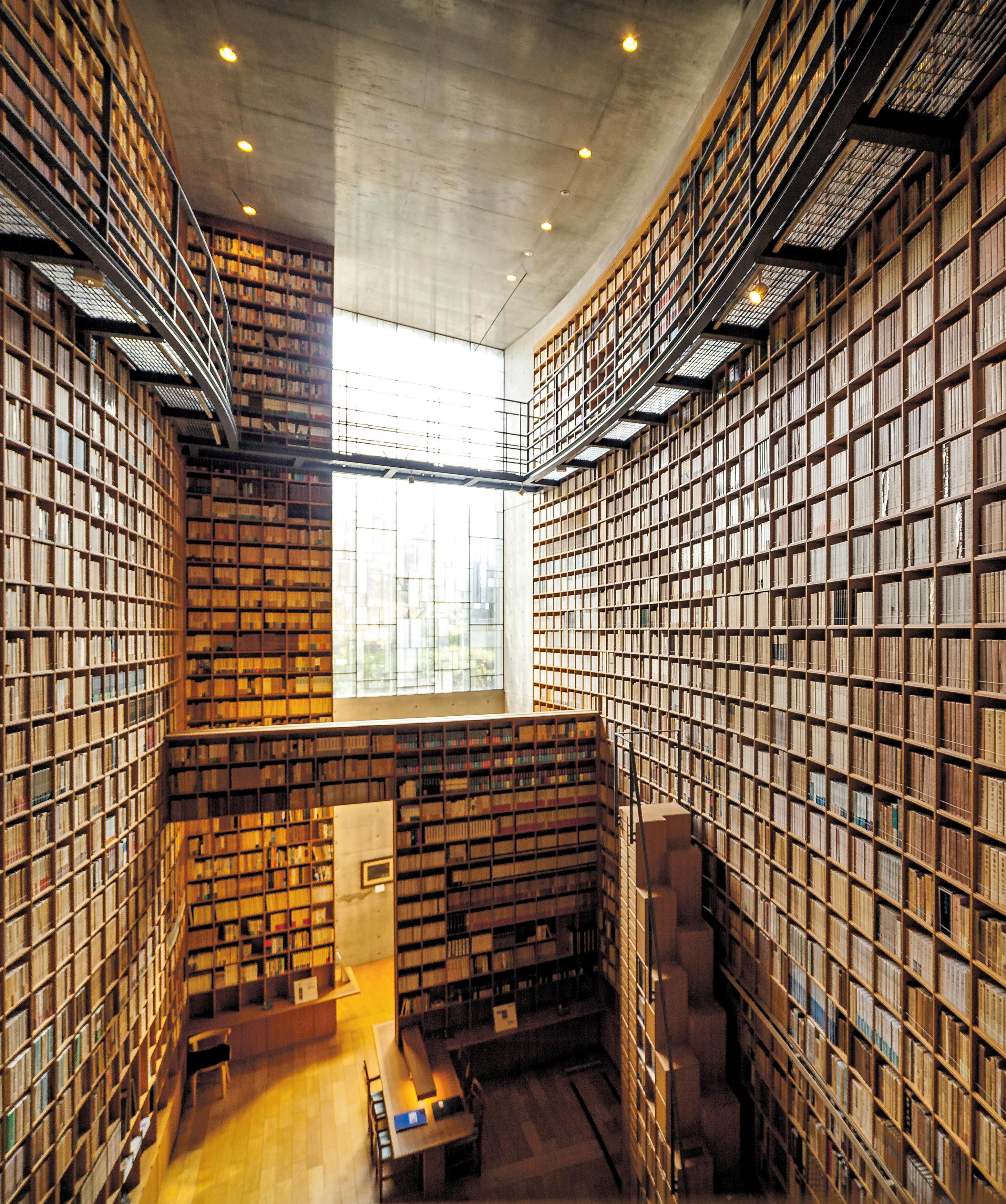


As I write, the lead stories are the UK’s mortality rate from covid-19; our response to the killing of George Floyd; and the controversy over J.K. Rowling’s comments on gender assignment. In each case, what troubles me is the binarism that each issue imposes on us.
At risk of walking into a minefield, I’d say that the third topic—is gender biological or self-determined?—is the least intractable, because it seems predicated on labelling. Labels are always being contested so I’d want to ask a lexicographer, or linguist David Crystal, how both sides could walk away from the most contentious terms and agree on a new terminology—though that would be like suggesting that Israelis and Palestinians resolve the problem of who owns Jerusalem by handing the Holy City to some international authority; easy to say if you don’t have skin in the game.
Behind the issue of labelling is the complaint by feminists that their long battle against the patriarchy is trashed if men can reassign themselves and then enjoy the fruits of feminist effort. That leaves us with a binary dispute between two victim groups, with the more recent painting the more established as an alternative patriarchy. That’s what a new lexicography would have to grapple with. (And that’s what I’m calling the least intractable?)
For many of us, the global protest at endemic racism is a clearer case of more obvious victims standing up to more obvious oppressors, though this simple polarity is challenged by the backlash of almost inarticulate whites (in the UK; very much less inarticulate in the USA) who feel that Black Lives Matter threatens their own self-definition.
These are another pair of victim groups, though few will rush to see them as co-equals on a par with trans and feminist groups—and that’s also part of the challenge. More problematic, if you accept the Black Lives challenge, is that it’s hard for non-BAME actors to have a view that counts. The test case here is Hitler and the Jews. It doesn’t matter that a Nazi might invoke the Versailles Treaty and hyperinflation to explain the popularity of Hitler. In this contest, the Jews win every argument—rightly. Equally, it doesn’t matter how whites might defend their privilege; slavery was eradicated in the UK by Wilberforce but whites are still living off the proceeds—and Blacks aren’t.
Men are similarly disempowered by feminism. There is no counter-argument to the attack on the patriarchy, unless one falls back on the hateful Roger Scruton. Males oppress: it’s the condition feminist critique traps them in and no argument will release them. (And that’s not to say they are thereby excused. But binarism can only place them in one box.)
The third challenge is the confluence of domestic politics and covid-19. One could say that the many who have suffered from the mismanagement of the pandemic have only themselves to blame for electing the charlatans who promised to square the circles of Brexit: most electors trusted cardsharps to run the country and this is the upshot.
That’s little consolation for the rest of us, especially if Boris Johnson’s affability is used to exonerate his having steered the 21st most populous country in the world into having the second highest death toll, until knocked into third place by Brazil. The slaughter resembles the Battle of the Somme and its Earl Haigs should be put on trial.

True, UK leaders haven’t said that the coronavirus was fake news dreamt up by leftists to damage the economy and steal the next election but their behaviour is no less a crime against humanity. Where it was always safer to assume a worse case scenario and take preemptive measures, ministers have stubbornly done the opposite, as well as lying about data and tests, and acting—in a re-run of the Brexit debate—as if stating an aspiration meant achieving it.
Which writers help us understand this? The two most obvious are relative newcomers to our shores: Ayn Rand, whose books glorified selfishness and blamed incompetence on collectivist caution; and Friedrich Nietzsche, her intellectual mentor. Dominic Cummings has learnt from both of them the contempt of the ruler for the ruled; but so have we. Convinced of our lack of agency, we either pull down statues or attack the police. Meanwhile the Earl Haigs drive to Durham. Binarism wins.
Stephen Games / Publisher and editor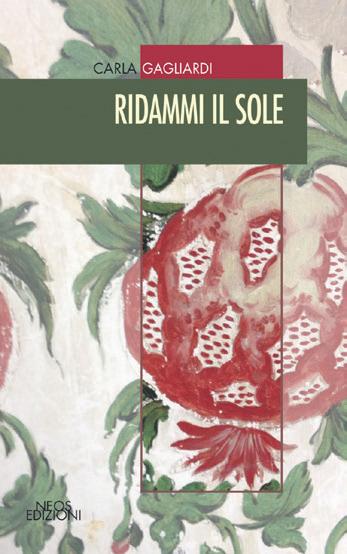

Jonathan Lawley
Historical assessment of the Andaman islands and its endangered tribespeople

See Issue 7
AN
Brian Verity
True story of a man who discovers that his wife has Huntington’s disease and helps her to kill herself

See Issue 2
HAPPY NAPPY
Stephen Games
Delightful A.A. Milne-style rhymes for parents to enjoy with their babies
See Issue 5
GREEK GOLD
IN
Karen Strang
The 1870s Scottish poems of Arthur Rimbaud translated into broad Scots

See Issue 2
Michael Holman
Fifty years of reporting on post-colonial Africa, by the former Africa editor of the Financial Times
See Issue 7
SUPPOSE
Anita Mason
Political ghost story about a museum curator forced to question his certainties
See Issue 5
Susan Barrett

English woman searches rural Greece for the truth of her father’s wartime death


See Issue 4
EMPIRE’S LOVING
Jay Prosser
A chest of memories reveals unexpected links between Iraqi Jews, Singapore Chinese and the British
See Issue 2
A HARD PLACE
Patrick Kelly
Gritty Romeo-and-Juliet novel about love across Northern Ireland’s sectarian divide
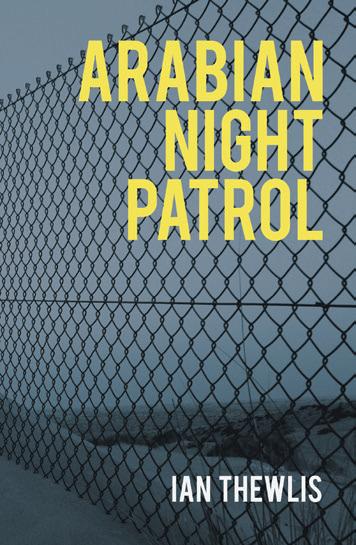
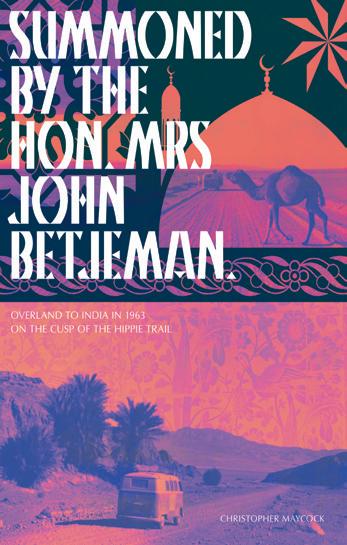

See Issue 5
TASTE WARS
Robert Best
Ringside view of the English design profession in the first half of the 20th century



See Issue 1
GOOD MORNING
EARTHLINGS
Peter Archer

Comic existential sci-fi novel in the style of The Hitchhiker’s Guide to the Galaxy See Issue 2
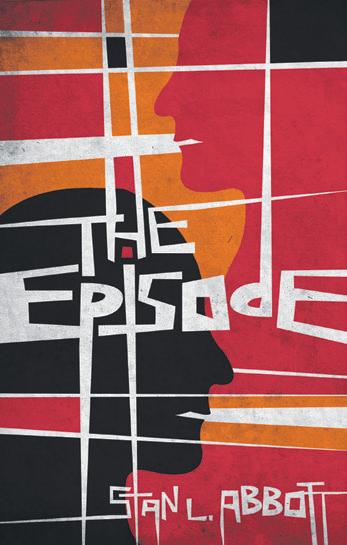
CALIENTE
Chris Hilton
A torrid love affair with a Havana street girl leads to adventure in rural Cuba
See Issue 3
THE MOTHER OF BEAUTY
Kirby Porter

Memories of a past love in Northern Ireland bring up issues of identity that are difficult to confront
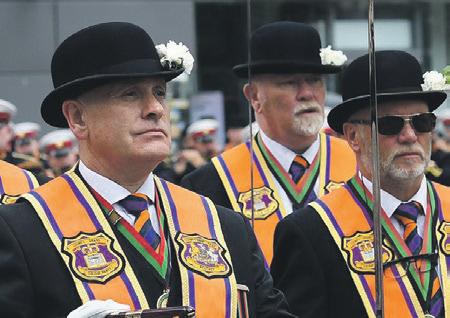
See Issue 2
SANS GILL
Kate Ashton
Sympathetic memoir of the political, religious and cultural milieu that the artist Eric Gill presided over See Issue 2
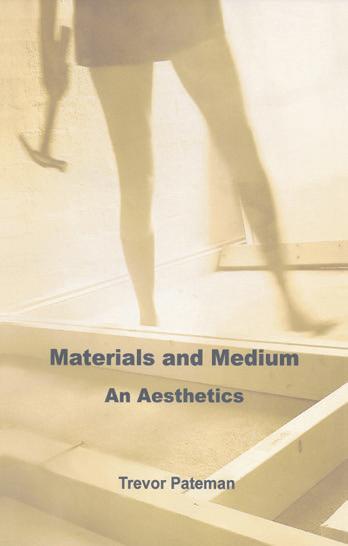

Booklaunch showcases published, self-published and unpublished books. All our previous books can be accessed for free online by clicking Archive in the header of our website: www.booklaunch.london. On other pages you’ll find audio of our authors reading, as well as featured pieces by guest writers. Listen also to audios with rolling text on our YouTube channel.
Since Booklaunch began 21 months ago, we have showcased 15 self-published books alongside over 200 more by mainstream publishers. We like to give independent authors a share of the limelight they cannot get in other publications. If you have self-published and want to promote your book, email a pdf of the full text to Maggie Bawden at book@booklaunch.london
In the classic story archetype, a hero is pulled unwittingly into some form of conflict and has to face off against a dangerous enemy. They could be fighting corruption at city hall, or battling a faceless, heartless insurance company. They could be called upon to protect the inhabitants of a small Western town against a marauding posse or to apply their forensic psychology skills in the hunt for a serial killer.
This structure is almost precisely the story of Donald Trump’s candidacy for president. It mixes together welldefined antagonists and protagonists; a challenging quest with an unlikely outcome; and page after page of memorable dialogue and storytelling.

We often think of storytelling in terms of making things up, of invention and fiction. Can this help explain why politicians—particularly those today—are seen as fabulists, lying their way to power, then continuing to lie with impunity throughout their spells in office? How are the parameters that define what counts as truthfulness and what counts as lying drawn in this context?
In an article on the trend in popular culture for a particular type of psychological drama, the journalist Zoe Williams suggested that ‘what we call post-truth politics would actually be better classed as gaslighting’. Gaslighting is a psychological condition named after a play written by the early-twentieth-century British writer Patrick Hamilton. Hamilton had something of a fascination for narcissistic sociopaths in his work. In Gas Light, the central character Jack Manningham mentally tortures his young wife Bella by manipulating her into believing that she’s losing her mind.
Over the last two decades, the term ‘gaslighting’ has started being applied to politics, and to many political commentators this is precisely the state of affairs that’s afflicting America, due to repeated exposure to Donald Trump’s persistent assault on truth.
The journalist Amanda Carpenter sees gaslighting as pivotal to Trump’s political success, and at the very heart of the post-truth phenomenon. She breaks down the Trump gaslighting technique into a five-stage process. First, he asserts something which has little or no basis in reality but is highly controversial and thus bound to attract attention—an early example was his advocacy of the idea that Barack Obama hadn’t been born in the United States (and thus wasn’t a ‘true’ American). He then spreads the rumour by citing vague or imaginary sources, while at the same time ensuring that he doesn’t explicitly commit to it himself—(‘Many people are saying …’; ‘A very reliable source has informed me ...’). He follows this by ramping up media interest by promising to reveal more about his knowledge of the issue at some indeterminate time in the future, then uses the furore he’s provoked as an opportunity to attack any of his opponents who try to criticize his pursuit of the issue. Finally, he’ll declare victory in the dispute, regardless of how the facts on the ground have played out—so, for instance, claiming that it was actually Hillary Clinton who’d raised questions about Obama’s place of birth, and that he, Trump, had been the one to resolve the issue by suggesting Obama should simply produce his birth certificate.
And of course, every time he cycles through this formula, he provokes the press into promoting his distorted view of the world. So even if we don’t believe the endless catalogue of nonsensical assertions, they still dominate the news agenda.
Once gaslighting became a popular way of criticizing the propagandist techniques of those in power, it also became available for use by all parts of the political spectrum. Thus, at a rally in 2018, the NRA’s executive vice-president Wayne LaPierre could claim that the opponents of gun control, including the survivors and relatives of tragedies like the Sandy Hook shooting, are themselves ‘gaslighting tragedy. They exploit victims to advance their ultimate agenda: kill the NRA and napalm the second amendment.’ The point has been reached, in other words, where one group is gaslighting another about the use of gaslighting in society.
Gaslighting as a form of psychological manipulation is a very real form of abuse and resembles three other terms that started out referring to practices which actually exist in the world: ‘false flag’ operations in which one side in a conflict commits an atrocity while pretending it was perpetrated by the enemy; ‘political astroturfing’ where paid actors are brought in to look like grassroots support; and the ‘deep state’ in which secretive, behind-the-scenes forces work against elected officials.
Each of them has, over the last few years, been co-opted to describe paranoid fantasies or politically-motivated distortions of the world, and from this have been used as way of corrupting or confusing political discourse. The pro-
cess in each case is the same as what happened with ‘fake news’, all of which feeds into a single overarching narrative which mixes scepticism and suspicion about politics with an obsession with the processes of storytelling themselves.
In October 2018, Donald Trump held a press conference in the Oval Office with one of his most vocal supporters, the rapper Kanye West. Most of it was dominated by a monologue from Kanye, in which he speculated that if he ever decided to run for president himself it wouldn’t be until 2024, as he wouldn’t want to unsettle Trump’s second term ambitions.
Among West’s philosophical musings, one assertion that came across as perhaps a little more lucid than some of the others was the justification of his support for the president. As he astutely remarked, ‘Trump is on his hero’s journey right now.’ The reference here is to an idea put forward by the mythologist Joseph Campbell. The ‘hero’s journey’ is an archetypal story pattern which can be traced from ancient myths to modern dramas. For the study of story structure, it’s a seminal idea.
A story, at its most basic, is a recounting of the actions taken by a person (or other anthropomorphized character) as they try to achieve a goal of some sort. The drama is their struggle to attain this goal and the changes that take place as part of this struggle. Crucially, a good story will also have some sort of meaning. It’s not just about what happened, but about how we feel about what happened.
If you wanted to illustrate Trump’s self-styled story in two sentences you could do worse than the assertion he made to an audience at the NRA conference in May 2018. ‘Your Second Amendment rights are under siege’, he warned. ‘But they will never, ever be under siege as long as I am your president.’
The two assertions seemingly contradict each other— Second Amendment rights are currently under siege / they’re not under siege while I’m president (which I am at the moment)—but also illustrate the simple, single story at the core of Trump’s appeal that is structured around the ‘Overcoming the monster’ archetype. Seen within the context of his narrative of the political outsider doing battle against an elitist political class, the two sentences somehow manage a perverse coherence.
But there’s more texture to his narrative than just this. The story I’ll use as an example is the one enacted in his 2016 election campaign, the story he fashioned for himself, not one that others tried to tell about him—although the way it was told relied in great part on his interactions with the media and how they reported on these interactions. This particular version of his story begins with him deciding to run for office and ends with the result of the election itself.
The protagonist in Trump’s story is, of course, Trump. He pulled from the shelf a standard archetype (a caricature, even) for his political character: that of political outsider. This allowed him to present himself as a notable exception in the initial crowded field of contenders. As the writer Mark Pack notes, choosing this character offered practical advantages for campaigning. It’s easier ‘to sound principled and consistent if you’ve not actually done anything’ and have no track record in politics, whereas it’s ‘quite hard to be principled and consistent with all the countervailing pressures that are on you’ when you’re in office.
In setting himself up like this, Trump’s character was able to exemplify the theme of the narrative itself. The same dynamic is at work for most populist leaders: they frame themselves as the antithesis of career politicians, so they can position themselves as the individualistic hero, not beholden to anyone else, and thus free to represent the will of the people. In Trump’s case, his combative style of speaking, and his lack of concern with the traditional etiquette of elected officials, all spoke to his character, which in turn represented his narrative.
In a political story, the protagonist is always working on behalf of a community that’s under threat and in need of a champion. The threatened community in Trump’s story is a mixture of blue-collar workers whose standard of living has deteriorated or who’ve lost their jobs. The next step is to create a concrete target against which to fight. It’s here that Trump excels most as a storyteller. His tactic of picking fights and never apologizing for the ad hominem attacks he makes gives him an endless list of opponents. Ultimately, however, it’s not specific individuals he’s in conflict with. The personalities are interchangeable. Jeb Bush and Hillary Clinton, for example, represented exactly the same values in the structure of narrative he was telling, despite being on different sides of the
The author teaches language theory at the Open University

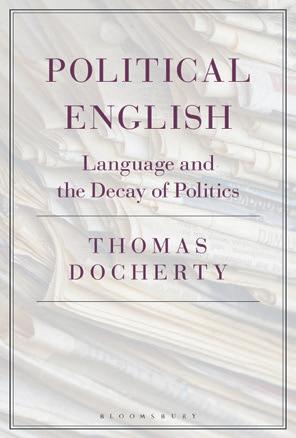
Philip Seargeant
Bloomsbury Academic (London), Hardback, 272 pages, 138 x 216, June 2020, 9781350107380
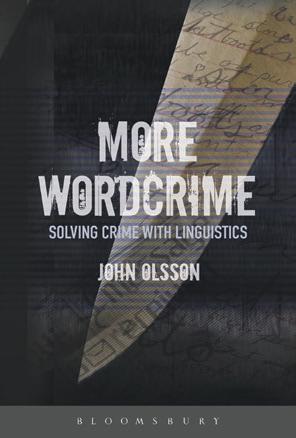
Publisher’s price £21.99
Save £2.64
Booklaunch price £19.35 inc. free UK delivery
To buy this book, visit www.booklaunch.london/sales
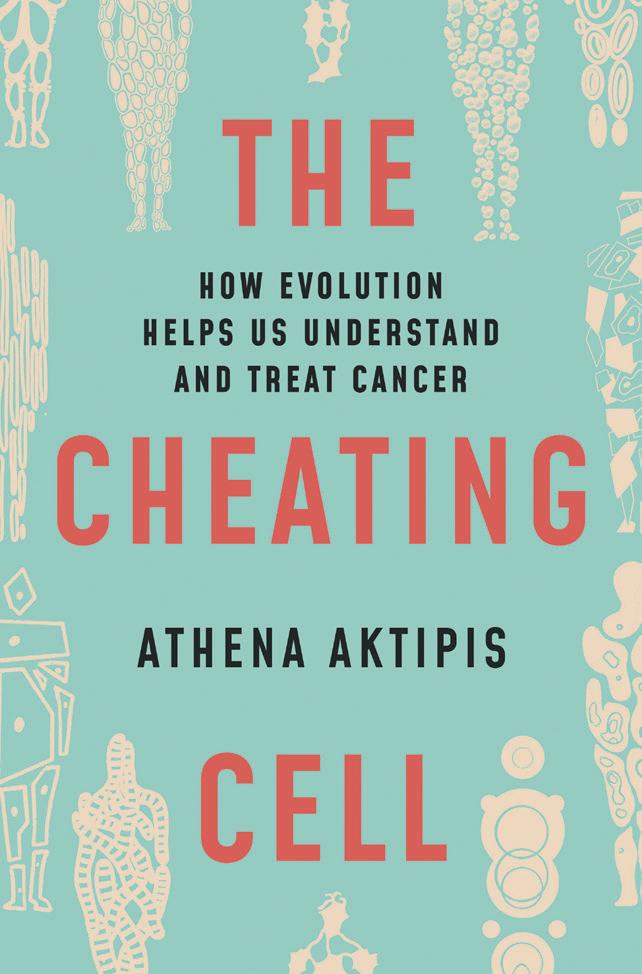 Athena Aktipis
Athena Aktipis
Princeton University Press (Woodstock), Hardback, 256 pages, 19 b/w illus., 156 x 235, April 2020, 9780691163840

Life has struggled with cancer since the dawn of multicellularity about two billion years ago. When we think of life on Earth, we typically think of multicellular organisms like animals and plants that are made up of more than one cell. The cells in a multicellular organism essentially divide the labour of making a living, cooperating, and coordinating to do all the functions that are needed in the body.
On the other hand, unicellular life forms—like bacteria, yeasts and protists—are made of a single cell that does all of the jobs of keeping that cell alive. Unicellular life dominated our planet for billions of years before multicellular life gained an evolutionary foothold. The world was cancer-free during these two billion years when unicellular life reigned. But when multicellular life entered the scene, it ushered in a new player: cancer.
Cancer is a part of us, and it has been since our very beginnings as multicellular organisms. Remnants of cancers have been found in the skeletons of ancient humans, from Egyptian mummies to Central and South American hunter-gatherers. Cancer has been found in 1.7-million-year-old bones of our early human ancestors in ‘the cradle of humankind’ in South Africa. Fossil evidence of cancer goes back further still; it is found in bones tens and even hundreds of millions of years old, from mammals, fish, and birds. Cancer goes back as far as the days when dinosaurs dominated life on our planet, and back even further than that, to a time when life was microscopically small. Cancer began before most of life as we know it even existed.
In order to manage cancer effectively, we must understand the evolutionary and ecological dynamics that underlie it. But we must also change our way of thinking about cancer, from viewing it as a temporary and tractable challenge to seeing it as a part of who we are as multicellular beings. Before multicellular life evolved, cancer did not exist because there were no bodies for cancer cells to proliferate inside of and ultimately invade. But once multicellular life emerged, cancer was able to emerge as well. Our very existence as multicellular organisms—as paragons of multicellular cooperation—is inextricably tied to our susceptibility to cancer.
faces that evoke modern art. Crested cacti are highly prized by professional botanists and backyard cactus lovers alike due to their beautiful and unusual mutated forms.
When I first saw a crested cactus on a visit to Arizona years ago, I was fascinated by the beauty and geometry of the plant. When I returned to my hotel room, I spent several hours looking at photographs of these natural biological formations and reading about them. I learned that the disrupted growth patterns of the mutated crested cacti sometimes result from damage during storms, sometimes from bacteria or viruses, and sometimes from genetic mutations during development.
I also learned that mutations that disrupt plant growth patterns are not unique to cacti—they happen across many plant species, from dandelions to pine trees. The technical term for these disrupted growth formations in plants is fasciation Fasciated plants are often more delicate than their nonfasciated cousins, and sometimes they do not flower normally, making it harder for them to reproduce and propagate themselves— however, fasciated plants are often cared for and propagated by gardeners and botanists. With proper care, crested cacti and other fasciated plants can live for decades with these cancer-like formations.
Learning about crested cacti marked the beginning of my fascination with cancer across forms of life. Why, I wondered, was cancer so pervasive across all forms of multicellular life? Cancer is uniquely a problem of multicellularity because multicellular life is made of many cells—cells that usually cooperate and regulate their behaviour to make us functional organisms. Unicellular life forms don’t get cancer because they are made of just one cell. This means that, for unicellular life, cell proliferation is the same as reproduction. But for multicellular life, too much cell proliferation can disrupt the normal development and structure of the multicellular organism.
Publisher’s price £22.00
Save £3.50
Booklaunch price £18.50 inc. free UK delivery

To buy this book, visit www.booklaunch.london/sales
We can look to the natural world to recognize what cancer is and how it evolves. One of the most beautiful examples is the crested cactus. Sometimes the cells in the growing tip of a cactus will mutate as a result of damage or infection. These mutations can disrupt the normal controls on cell proliferation during the growth of the plant. This often leads to striking formations: desert saguaros that look like they are wearing crowns, potted cacti that look like brains, garden cacti with knobby geometrical sur-


You might feel like a unitary being, but in reality you are made of trillions of cells that are cooperating and coordinating their behaviour every millisecond to make you a functional human being. The number of cells inside our bodies is mind-boggling—more than four thousand times the number of humans on Earth. We are 30 trillion cooperating, evolving, consuming, computing, gene-expressing, protein-producing cells. How can 30 trillion cells make a being that seems so much like one single entity with one set of goals? How can I be made of so many cells yet feel so unitary?
One answer to these questions comes from evolutionary biology: we have been shaped by nearly one billion years of evolution on multicellular bodies to have cells that act in a way that enhances the survival and reproduction of the cooperative cellular society as a whole—the multicellular body. Our cells constrain their proliferation, divide labour, regulate their resource use, and even commit cell suicide for the benefit of the organism. The scope of cooperation inside us is beyond anything humans have ever accomplished—the cells inside us behave like a success story of a utopia, sharing resources, taking care of the shared environment and regulating their behaviour for the good of the body.

But sometimes this cellular cooperation breaks down. And when it does, this can set off an evolutionary and ecological process in the body that culminates in the ultimate form of cellular cheating: cancer. Cancer is what happens when cells stop cooperating and coordinating for the benefit of the multicellular body and start over-using resources, trashing the shared environment of the body, and replicating out of control. Inside the body, these cheating cells can have an evolutionary advantage over normal cells, despite the fact that they can damage the health and survival prospects of the body of which they are a part.
Although we feel like unitary individuals, fundamentally we are not. Because we are made of a vast population of cells, evolution naturally occurs within
‘Cancer cells are like bad roommates. They don’t do their share, don’t clean
and then invite
friends to stay over’
our bodies. Cells in the body can evolve just as organisms in the natural world evolve. And as we age, the population of cells that composes us continues to evolve, often in directions that put us at risk for cancer.
Cells are of course a part of who we are, yet they are also very much their own entities. Cells express genes, they process information, they behave—moving, consuming resources, and building extracellular structures like tissue architecture. In addition, they are a population inside our body that is evolving in a complex ecological environment. We need both of these perspectives—cells as a part of us and cells as their own unique evolving entities inside of us—to understand what cancer is and why we are vulnerable to it.
From the perspective of our bodies, cancer is a threat to our survival and well-being. From the perspective of the cell, cancer cells are only doing what every other living thing on this planet does: evolving in response to the ecological conditions they are in, sometimes in ways that are detrimental to the system of which they are a part. This leads to a seemingly paradoxical evolutionary scenario: Evolution favours bodies that are good at suppressing cancer, but evolution also favours cells inside the body that have the characteristics of cancer cells, such as rapid proliferation and high metabolism.
The scale of cellular cooperation in our bodies is astonishing. But even more stunning is how resilient our bodies can be when faced with cellular cheating—how we can survive and thrive despite the threat of cancer. Multicellular bodies have evolved many different cancer suppression mechanisms over billions of years. Like the crested cacti, which can coexist with their cancer-like growths for decades, perhaps we also can live with cancer.

Before I learned about cancer’s evolutionary nature, I thought of cancer as nothing more than a rather uninteresting disease. My work focused on deep and fundamental questions about the evolution of life: Why are so many organisms social? What makes cooperation stable despite the possibility of exploitation from so-called cheaters? I had always been drawn to theoretical questions, so I shied away from any topic that seemed to require the memorization of an endless catalogue of facts with no framework to hold them together. Cancer seemed to be one of those topics—no theoretical grounding, just an endless number of studies on mechanism after mechanism with no underlying principles to discover. It was certainly worthy of study because of its importance to human health, but I had no interest in studying it myself.
Then I moved to the University of Arizona to work as a post-doctoral researcher, and I began working with John Pepper, a pioneer in cancer evolution, a new field at the time. I realized that cancer was a cellular example of exactly what I was already studying: it follows the same rules that all evolutionary and ecological systems follow. Placing cancer in an evolutionary framework provided a starting point for understanding its complexity.
The great evolutionary biologist Theodosius Dobzhansky—one of the pioneers of evolutionary thinking in the 20th century—once said, ‘Nothing in biology makes sense except in the light of evolution.’ If Dobzhansky were around today, he might very well say, ‘Nothing in cancer biology makes sense except in the light of evolution.’
Evolutionary theory explains how cancer can exist on two different levels. First, it shows how evolution among the cells in our body—often called somatic evolution— leads to cancer. The cells in our body vary in terms of how evolutionarily fit they are inside our bodies; some cells replicate faster and survive longer than others. The cells that proliferate more and survive longer subsequently make up a larger portion of the next generation and eventually come
to dominate the population. This is evolution by natural selection, the same process that has shaped the evolution of organisms in the natural world.
In addition, evolutionary theory helps explain why cancer has persisted over the course of life on Earth. Organisms have evolved over millions of years to suppress cancer—to keep somatic evolution under control—so that we can live long and evolutionarily successful lives. These cancer suppression systems are the reason that multi-cellular life is even possible—without them, multicellularity would never have been able to overcome the challenges of cellular cheating from within. But these cancer suppression systems are not perfect. Evolutionarily speaking, keeping would-be cancer cells 100 percent under control is not possible.
The reasons we can’t completely suppress cancer are varied and each is fascinating in its own right. Sometimes, lower cancer risk is associated with lower fertility, creating an evolutionary bind for organisms evolving to suppress cancer. In addition, organisms can’t suppress cancer completely because there is a mismatch between past and current environments: modern humans are exposed to mutagens like cigarette smoke and lifestyle factors such as low physical activity, which lead to greater susceptibility to cancer. An even more bizarre reason why we can’t suppress cancer is that there is a battle over our growth happening between genes we inherit from our mothers and genes we inherit from our fathers. Some of the genes we inherited from our fathers are epigenetically set to
promote growth and cell proliferation, contributing to an increased risk of cancer.
In cancer biology, the environment around a tumour is called the tumour microenvironment. This is essentially the ecosystem of the tumour, in many ways like an ecosystem in the natural world. The ecosystem of the tumour provides necessary resources that allow the cells in the tumour to survive and thrive, but it can also threaten the survival of cells when resources run out, waste products build up and the immune system starts preying on cancer cells. Cancer cells can alter their environment as they consume resources such as glucose; for instance, they can reduce the supply of resources for neighbouring cells and leave behind waste products like acid. Those changes, however, can trash the ecology of the cancer cells, making it difficult for them to survive and thrive. The destruction of the microenvironment can create selection pressures for those cells to move. Cells that can move and are able to relocate to a new and better environment in the body will survive and leave more cellular progeny, spurring the evolution of invasive and metastatic cells. Ecology is central to the ways in which cancer emerges and progresses. Just as we can’t understand how and why organisms evolve without knowing about their environments, we can’t understand how and why cancer evolves without knowing the ecological dynamics in and around a cancerous tumour.
The common metaphor for cancer is war—patients ‘fight’, ‘battle’, ‘win’ or ‘lose’. The war metaphor for cancer is powerful and compelling. It can help to rally support for cancer research and bring people together around a common goal, but it can also be misleading. We can’t completely eradicate something that is fundamentally a part of us. This aggressive approach to the disease seems like a good idea if we view cancer as an enemy to eradicate. But unless we see cancer for what it is—a population of diverse cells evolving in response to every treatment we throw at it—we run the risk of
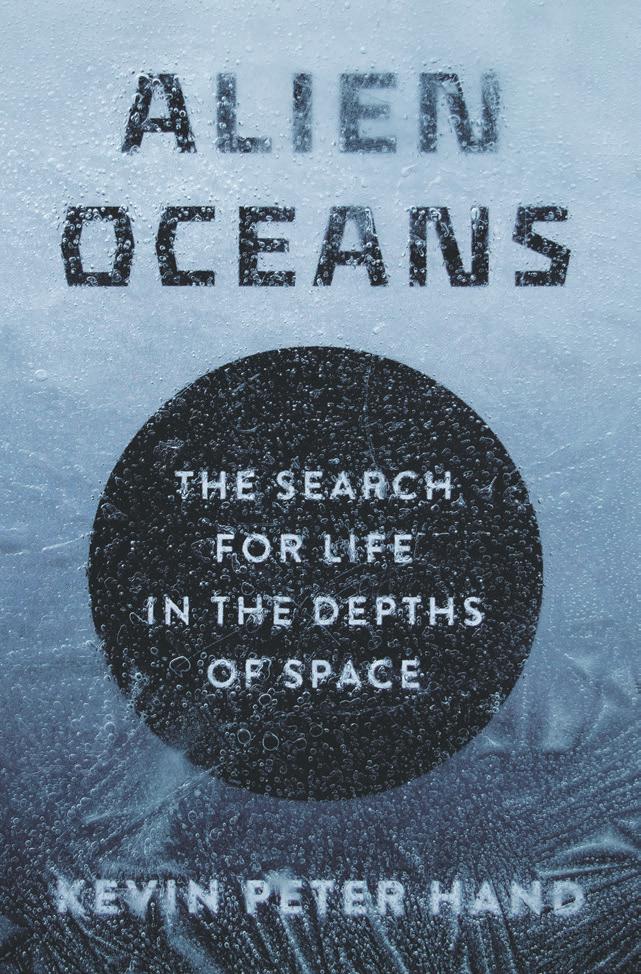
ALIEN OCEANS
THE SEARCH FOR LIFE IN THE DEPTHS OF SPACE
Kevin Hand Princeton University Press (Woodstock), Hardback, 304 pages, 15 colour + 22 b/w illus., 156 x 235, May 2020, 9780691179513

If we have learned anything from life on Earth, it is that where you find liquid water, you generally find life. Water is essential to all life as we know it. Every living cell is a tiny bag of water in which the complex operations of life take place. Thus, as we search for life elsewhere in the solar system, we are primarily searching for places where liquid water can be found today or where it might have existed in the past.
At least six moons of the outer solar system likely harbour liquid water oceans beneath their icy crusts. These are oceans that exist today, and in several cases we have good reason to predict that they have been in existence for much of the history of the solar system. Three of these ocean worlds—Europa, Ganymede and Callisto—orbit Jupiter. They are three of the four large moons first discovered in 1610 by Galileo. The fourth moon, Io, is the most volcanically active body in the solar system and does not have water. At least two more ocean worlds, Titan and Enceladus, orbit Saturn. Neptune’s curious moon Triton, with an orbit opposite to the direction it rotates, also shows hints of an ocean below.
These are only the worlds for which we’ve been able to collect considerable data and evidence. Many more worlds could well harbour oceans. Pluto may hide a liquid mixture of water, ammonia and methane, creating a bizarrely cold ocean of truly alien chemistry. The odd assembly of moons around Uranus—such as Ariel and Miranda—might also have subsurface oceans.
Finally, throughout the history of the solar system, ocean worlds may have come and gone. Early in our solar system’s history, oceans might have been commonplace, be they on the surface of worlds like Venus, Earth, and Mars, or deep beneath icy crusts of worlds in the asteroid belt and beyond. Today, however, it is the outer solar system that harbours the most liquid water.
This distinction—between liquid water in the past and liquid water in the present—is important. If we really want to understand what makes any alien organism tick, then we need to find life that is alive today and that requires the presence and persistence of liquid water.
The molecules of life (e.g. DNA and RNA) don’t last long in the rock record; they break down within thousands to millions of years, which, geologically speaking, is a short amount of time. Bones and other mineral structures of life can stick around much longer and form fossils. Fossils are great, but they only tell you so much about the organisms from which they formed.
This is important because I really want to understand how life works. What is the biochemistry that drives life on another world? On Earth, everything runs on DNA, RNA, ATP and proteins. I want to know if there could be another way. Can life work with some other fundamental biochemistry? Is it easy or hard for life to begin? Does the biochemistry of the origin of life converge toward DNA and RNA? Or were there contingencies that made these the best molecules for life on Earth but perhaps not on other worlds? If we were to find extant life in an ocean world, we could begin to truly answer these questions.
In the 20th century, with the advent of the space age, our human and robotic explorers to the Moon, Venus, Mars, Mercury and a host of asteroids have revealed that the principles of geology work beyond Earth. Rocks, minerals, mountains, and volcanoes populate our solar system and beyond.
But when it comes to biology, we have yet to make that leap. Does biology work beyond Earth? Does the phenomenon we know and love and call life work beyond Earth? It is the phenomenon that defines us and yet we do not know whether it is a universal phenomenon. Is biology an incredibly rare phenomenon or does life arise wherever the conditions are right? Do we live in a biological universe?
We don’t yet know. But for the first time in the history of humanity, we can do this great experiment. We have the tools and technology to explore and see whether life has taken hold within the distant oceans of our solar system.
To answer these questions, we need to explore places where life could be alive today and where the ingredients for life have had enough time to catalyze a second, independent origin of life.
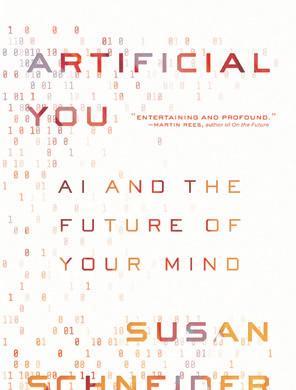
This aspect of a second, independent origin is key. Take Mars. Even if we were to find signs of life on Mars, there are limits to what we’d be able to conclude about that life form and about life more generally. Mars and Earth are simply too close and too friendly, trading rocks since early childhood. When the solar system and planets were rela-
tively young, large asteroids and comets bombarded Earth and Mars with regularity, scooping out craters and spraying ejecta into space. Some of this debris would have escaped Earth’s gravity and may have ended up on a trajectory that eventually impacted Mars (or vice versa).
We know that life was abundant on Earth during many of these impact events and thus it is not unreasonable to expect that some of the ejecta were vehicles for microbial hitchhikers—some few of which could (with a small probability) have survived the trip through space and the impact on Mars. Even if just a few microbes per rock survived, there were enough impacts and enough ejecta that the total number of Earth microbes delivered to Mars has been calculated to be in the range of tens of billions of cells over the history of the solar system. If one of those Earth rocks came careening through the Martian atmosphere about 3 billion years ago, it could have dropped into an ocean or lake on Mars, and any surviving microbes on board might have found themselves a nice new home on the red planet.
This possibility, however remote, would make it difficult to be completely confident that any life we discovered on Mars arose separately and independently—in other words, that it was really Martian. Life on Mars could be from Earth, and vice versa.
The ocean worlds of the outer solar system do not suffer these pitfalls. First, by focusing on worlds with liquid water oceans, we are focusing on worlds that could harbour extant life; and thus we could study their biochemistry in detail. Second, the ‘seeding problem’ is almost negligible. Very few rocks ejected from the Earth could make it all the way to Jupiter and Saturn. In a computer simulation done by the planetary scientist Brett Gladman at the University of British Columbia, six million ‘rocks’ were ejected from the Earth and sent on random, gravitationally determined trajectories around the Sun. Of those six million, only about a half dozen crashed into the surface of Europa. Slightly more made it onto the surface of Titan.
The rocks that did impact Europa did so at a speed that would cause them to vaporize on impact; none would be big enough to break a hole through Europa’s ice shell. Therefore, any material that managed to survive the impact would be left on Europa’s surface, exposed to harsh radiation. Thus, even if we discovered DNA-based life there, we could reasonably conclude that those organisms represented a second, independent origin of life.
I should clarify that when it comes to looking for a separate, second origin of life and biochemistries that could be different from ours, I am not referring to what I call ‘weird life’—that is, life that does not use water as its primary solvent and carbon as its primary building block. We examine this topic in more detail when we explore Titan’s surface, but for now, when I refer to ‘alternative biochemistries’, I am still referring to water- and carbon-based life. What is ‘alternative’ here is the prospect of finding different molecules that run the show, that is, an alternative to DNA.
In our efforts to see if biology works beyond Earth, we start with what we know works. Water- and carbon-based life works on Earth and thus we look for similar environments beyond Earth.
Our own alien ocean
You may have seen old maps where sea monsters, giant squid and dragons dot the vast expanse of seas yet to be explored. One globe from 1510 bears the phrase that has become synonymous with unknown dangers and risks: Hic sunt dracones; ‘Here be dragons.’
The ocean has long been the source of myths and legends. It was—and continues to be—home to aliens of a closer kind. How did we come to explore our own ocean and its many secrets?

The Challenger expedition, departing England December 1872 and returning home four years later, was the first to survey the biology of the deep ocean. The expedition’s Royal Navy ship, the HMS Challenger, carried its crew around the world’s oceans, covering a distance equivalent to a third of the way to our Moon. It was, and remains to this day, one of the most important and pioneering scientific expeditions to set sail.
Chief scientist of the expedition, Charles Wyville Thomson, was given permission from the Royal Navy to overhaul the ship, removing much of the weaponry on board and replacing it with instruments and labs. One instrument was little more than a fancy spool of line with a weight on the end. Simple as it was, this instrument
The period 1925–7 was undoubtedly key in the development of quantum physics, a period that saw the birth of a consistent and logical theoretical framework coupled with a philosophical basis. It is no surprise that many contributors such as Max Born, Paul Dirac, Werner Heisenberg, Wolfgang Pauli and Erwin Schrödinger were awarded Nobel prizes for their work. This was the peak of a revolution that spanned the first quarter of the 20th century.
In retrospect, it is natural to view the period as a successful finale that secured the status of quantum physics. At the time, however, there was much uncertainty and mistrust. Niels Bohr received a mixed reaction to a lecture he gave in Como in 1927, principally because of the gap it opened between his vision and classical physics. Nevertheless, it became clear that the new physics constituted an extremely productive way to understand the structure of matter.
The emphasis in the postrevolution period therefore became the development, extension and refinement of the new theoretical tools that subsequently led to a host of successes in the field of atomic and molecular physics and, particularly with the development of accelerators, in the field of particle physics.
In many areas, of course, classical physics continued to provide a perfectly suitable base for establishing and developing a research programme. But for many young physicists, the excitement and strangeness of quantum physics, and the inherent challenges it offered, were a great attraction. In this context, it is noteworthy that Evan James Williams’s early years coincided with this revolutionary period. He was born between the emerg ence of Planck’s ‘quantum’ and Einstein’s claim that the light quantum (the photon) is real, and by the time he went to Swansea Technical College in 1919 to study physics, the ‘old’ quantum theory had come of age. Given that Williams’s studies at Swansea would have concentrated on classical physics, however, it is questionable whether he would have been fully aware during his time at the college that the inadequacies of the old quantum theory were becoming increasingly apparent, leading to a sense of crisis.

In leaving Swansea for Manchester in 1924, Williams moved from a department that was still in its infancy to one at the forefront of developments. Ernest Rutherford’s leadership at Manchester’s Department of Physics had ensured that its research was among the best in Britain, and by the time Williams arrived there, after Rutherford had left to take over the Cavendish Laboratory in Cambridge, it was being led by the 29yearold William Lawrence Bragg who, with his father, had won a Nobel Prize in 1915 for his work on Xrays, crystals, diffraction and wave theory.
Williams’s supervisor for his doctorate was John Mitchell Nuttall but Williams chose not to join the department’s main research focus—the analysis of crystal structures—but to study the scattering of Xrays, focusing on elementary particles that emerged as a result of collisions between Xrays and the atoms of various gases. In order to track the particles, he used a cloud chamber, a vessel filled with these gases, through which he directed the Xrays. The basic notion was that a collision between a sufficiently energised charged particle and an atom can ionise the atom by releasing one of its electrons, leaving the rest of the atom—the ion—positively charged. Therefore, as a particle speeds through the gas in the chamber colliding with a stream of atoms in its path, ions are formed along that path.
To observe the path, the gas in the chamber is saturated with water vapour. By lowering the pressure of the gas suddenly (thereby also lowering the temperature), water droplets condense on the ions and leave a visible trace akin to morning dew on the strands of a spider’s web. Cameras can then record the tracks. The process won a Nobel Prize in 1927 for C.T.R. Wilson, who had developed it, and the cloud chamber went on to become the mainstay of the experiments conducted by Williams.
One result, already well known, was that the electrons released when Xrays collide with gas atoms fall into two classes. The first, known as photoelectrons, are associated with Xray absorption, a process that corresponds to the photoelectric effect discovered by Philipp Lenard. The second, known as recoil electrons, are the product of the scattering of an Xray quantum and the release of an electron as a result of the collision. The energy of the electrons in the first class—the photoelectrons—is significantly greater than that in the second class, so that their tracks in the cloud chamber are much longer. The two classes can therefore be distinguished by how they appear on the photographs of the tracks.
Williams conducted experiments to measure the tracks of both classes of electrons. As a result, he was able to confirm the accuracy of the American Arthur Compton’s theoretical predictions, based on the quantum picture, that an Xray behaved like a particle when scattered. He was also able to show that the number of scattered Xray photons corresponded to the number of electrons released, thus providing further confirmation of the validity of the quantum picture.
Williams later made measurements comparing the momentum of an absorbed Xray with the momentum of the released photoelectron. This time, the experimental results did not agree with those predicted on the basis of the ‘old’ quantum theory, thus raising new questions.
It is significant that after leaving Manchester Williams demonstrated that Arnold Sommerfeld’s theoretical analysis based on quantum physics established a relationship between the momentum of the Xray and that of the photoelectron which did agree with the experimental results.
Williams’s work was already highlighting his originality and ability as an experimenter, and his publications also showed his confidence in applying theory relevant to his experiments. Much of his output not only included details of the experiments and their results, but also an analysis of the relevant theory and calculations that allowed him to compare experimental results with those predicted by theory.
Additionally, Williams was able to complete and submit his doctoral thesis in November 1926 (not 1927, as recorded by many, including Blackett in his memorial tribute), just over two years after he had started in Manchester, and many months before the end of his scholarship term.
Having been awarded his doctorate, Williams turned his thoughts to the next step in his career. It was no surprise that the Cavendish Laboratory in Cambridge was high on his list but he would need to apply for a scholarship in order to secure financial support. His attention was drawn to an endowment by Viscount Rhondda to Gonville and Caius College. The scholarship gave preference to students from Wales seeking to study Mathematics and the sciences, and Williams applied for and won it but since he had also gained an 1851 Royal Exhibition senior scholarship, based on a fund established following the exhibition at the Crystal Palace in London in 1851 to promote research in science and engineering, his Rhondda Scholarship was awarded without any associated funding.
Williams was formally admitted to Gonville and Caius, but a fire at the college in early 1929 meant that he lost all his books and other belongings—for which the college authorities duly reimbursed him with a grant equal to the value of the Rhondda Scholarship for two terms. He also secured a position in the Cavendish.
His senior scholarship began in July 1927 and he spent the first three months in Manchester completing work on the momentum of photoelectrons (as referred to above). This was published in 1928 in the Proceedings of the Royal Society, with Nuttall and another student as coauthors. Williams had succeeded, at the ripe young age of 25, in appearing in one of the most prestigious British scientific journals, with his name printed first in the list of authors.
At the start of October 1927, Williams moved to Cambridge to work on his second doctorate, this time under Rutherford’s supervision. He worked in a small research room on the first floor of the Cavendish, where one of his neighbours was a specialist in nuclear physics, Norman Feather. Other neighbours were Fernand Terroux, a Canadian who had also been awarded an 1851 Royal Exhibition scholarship and who later became Professor of Physics at McGill University in Canada, and a third Royal Exhibition scholar, Ernest Walton who, with his colleague John Cockcroft achieved world fame by being the first scientists to split the atom.
Those starting their research at the Cavendish received training for their practical work in blowing glass and constructing equipment. Even researchers who had already served an apprenticeship elsewhere were expected to attend some sessions and Williams was no exception. Another custom was the closing of the laboratory at six every evening. No exceptions were permitted. Rutherford argued that evenings should be used to think, to read and to write. Williams was frustrated by it though some years later, he told John Wheeler, who later worked with Bohr on the mechanism of nuclear fission, that this prohibition had been the reason why he turned to theoretical work during his time at the Cavendish. At Cambridge, the theoretical

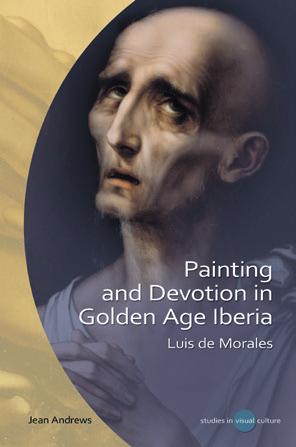

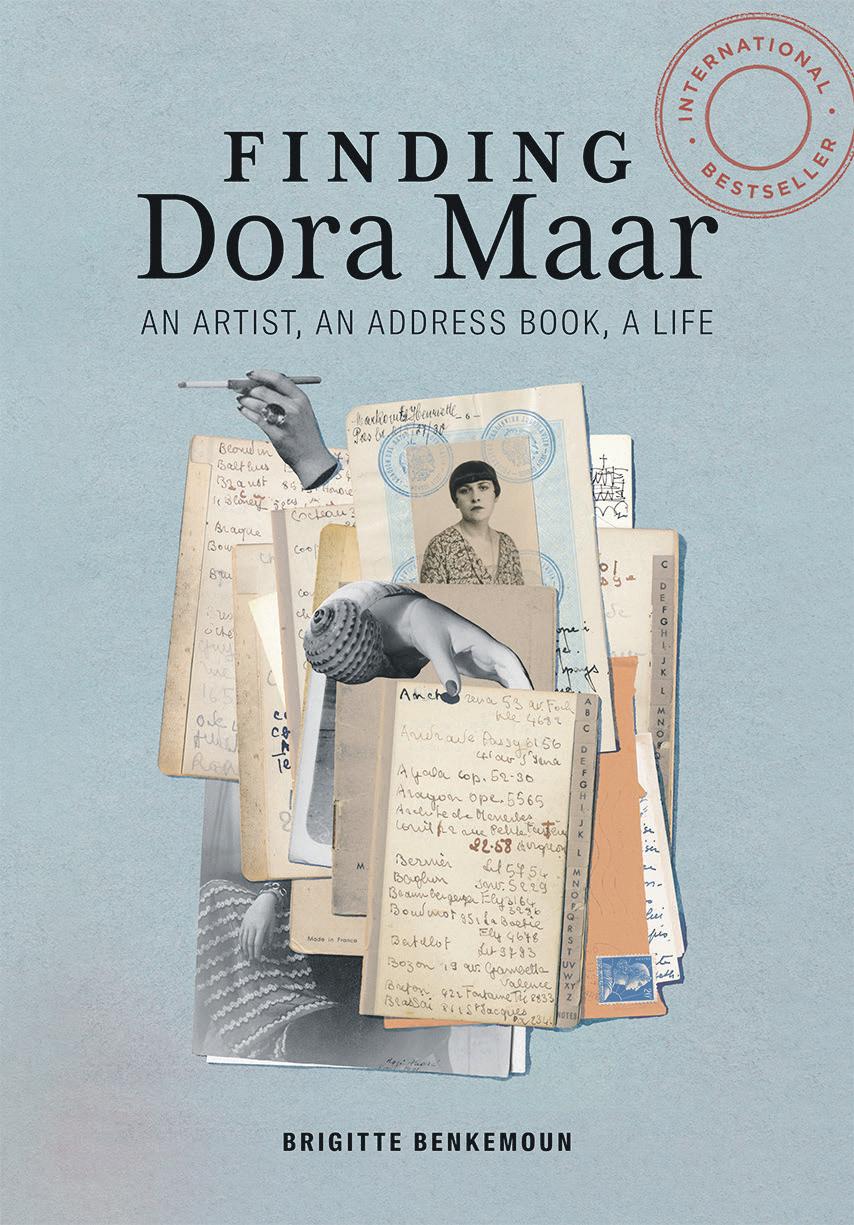
Brigitte
Getty Publications, Los Angeles, Softback, 216 pages, 146 x 210, 30 June 2020, 9781606066591


It arrived in the mail, carefully packed in bubble wrap. Same trademark, same size, same smooth leather, but redder, softer, with a well-used sheen.
He’ll like this, I thought, maybe even better.
He had just lost a small Hermès diary, newer than this one, but somehow ageless from constantly sliding in and out of pockets. As always when he loses something, which happens regularly, I had to help him look. But this time the diary could not be found. After several days, T.D. resigned himself to buying a replacement.
‘Sadly, that kind of leather isn’t made anymore,’ a salesclerk answered, vaguely apologetic, politely definitive. But T.D. never gives up. His lucky find showed up on eBay under ‘small vintage leather goods.’ Seventy euros. And a few days later it arrived.
Obsessive behavior is a con tagious disease; in his absence I wanted to verify that the found object really was an exact replica of the lost one. I inspected it from every angle. Then I opened it.
The seller had removed the annual diary refill but a small index for telephone numbers remained, slipped into the inner pocket. Without thinking, I began to leaf through it. I must have been a bit distracted because it took me three pages before a name caught my eye: Cocteau! Yes, Cocteau: 36, rue Montpensier!
difficult to reach, on vacation, busy, obviously unmoved by the romance of the found address book: ‘I hardly know this pair of sellers, especially since they recently moved very far from this area. I think it’s likely that either their ties with the former owners of these diaries are nonexistent or that they don’t want to hear about this.’
Publisher’s price £18.99
Save £3.00
Booklaunch price £15.99 inc. free UK delivery
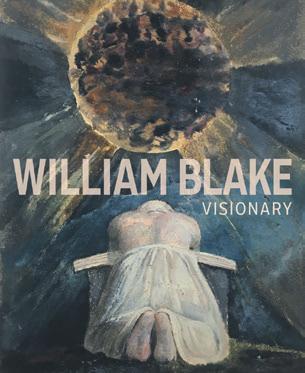
To buy this book, visit www.booklaunch.london/sales
I remember a shiver running down my spine, then the breath taking discovery of Chagall: 22, place Dauphine! I flipped wildly through the pages: Giacometti, Lacan … Here was the whole lineup: Aragon, Breton, Brassaï, Braque, Balthus, Éluard, Fini, Leiris, Ponge, Poulence, Signac, Staël, Sarraute, Tzara—twenty pages on which the greatest postwar artists were listed in alphabetical order. Twenty pages I had to read over and over to believe. Twenty astounding pages, like a personal telephone directory for Surrealism and modern art. Twenty pages I gazed at in wonder. Twenty pages that I touched softly, hardly breathing, afraid they might self-destruct or fade like a dream. And at the very back, to date the treasure, a 1952 calendar, proving that it had been purchased in 1951. Never again would I scold T.D. for losing things.
Now, of course, I wanted to know who had written these names in brown ink. Who could have rubbed elbows with these twentieth-century geniuses? A genius, clearly!
The ad on eBay noted that the seller was an antique dealer located in a hamlet about thirty kilometers from Brive, in Cazillac, a charming Lot village in the green valleys of the Causse de Martel. Cazillac, with fewer than five hundred inhabitants, known (a little) for its Romanesque church, twelfth-century tower, wash houses, bread oven, and the Sauvat cross that symbolically marks the forty-fifth parallel, the halfway point between the equator and the North Pole. That’s where my address book came from! A forgotten place on earth, but exactly in the middle of our hemisphere.
I did find the name of a Surrealist artist who came from that area. But who would have known Charles Breuil? Not Breton, apparently, or Braque, or Balthus.
Edith Piaf was also a frequent visitor to the Causse de Martel. In the 1950s, ‘The Little Sparrow’ (la Môme) returned many times to a rest home a few kilometers from Cazillac. At sunset she went to pray at a small dilapidated church perched on the cliffs. She was even said to have paid for the restoration of its stained-glass windows, swearing the priest to secrecy during her lifetime. So was this Piaf? She had been friends with Cocteau, she knew Aragon during the Liberation, and Brassaï had taken her photograph.
But in a speedy response to my first message, the seller of the address book put a quick end to all speculation regarding Piaf and Cazillac: ‘Many years ago, I bought a lot that included two Hermès diaries during a wonderful auction in Sarlat, in the Perigord. I know nothing more about them, but I do know the person in charge of the auction house, and I can ask him if he has information on the sellers.’
A month later, she kept her promise: the seller was a woman from Bergerac who apparently delivered the diary herself, along with other items, to the auctioneer. Michèle S. also remembered the exact date of the auction: May 24, 2013, in Sarlat. She suggested that I contact the person in charge of the auction house to learn more. But he proved
Clearly he himself had no desire ‘to hear about this’. I did not let up on the manager of the Sarlat auction house. He would not bend. It was impossible to get from him the new address of the sellers, or even any information on what other items they might have delivered to him. He agreed only to forward a letter to them, to which they never replied. And he stopped answering my messages as well: ‘It’s a delicate matter that I cannot “legally” push further without incurring possible complaints.’ Legally speaking, I knew he was right. But intrigued by his remark, I returned to his last message and considered it more carefully. Why tell me that he hardly knew this couple? He knew them well enough to know that they had moved ‘recently’ and ‘very far from this area’. And he must have called them if he could state with so much certainty that ‘their ties with the former owners of these diaries are nonexistent’ and that ‘they don’t want to hear about this.’ Why such secrecy?
There had to be a reason why, one day in Bergerac, someone had come upon this red leather case and decided to sell it without thinking of emptying its contents. Who could have lived or died in Bergerac, and also known all the notables of Paris?
Wikipedia lists a certain number of ‘figures linked to the district’ who might have visited the geniuses in the address book in the 1950s:
— Desha Delteil, ‘classical American dancer famous for her acrobatic postures’
— Hélène Duc, actress
— Jean Bastia, director and screenwriter
— Jean-Marie Rivière, actor, theater and music hall director—Juliette Gréco
None of these profiles really corresponded to the address book entries. Not even Juliette Gréco: her 1951 address book would have included instead the names of Sartre, Vian, Kosma—this was not exactly her world.
But I would find out sooner or later. I would not give up. I would learn who had owned this address book.
Achille de Ménerbes / 22 rue Petite Fusterie, Avignon
Forget Bergerac! Forget the sellers and auctioneers! Since I had at my disposal exhibit A, I could subject this piece of evidence to a kind of interrogation: decode it line by line and page by page, make a list of the known friends of the unknown genius, search the others on the internet. I would end up solving the mystery.
A-B: The first entry is illegible because it is partly blotted out with black ink. The second might be ANDRADE, then AYALA. On the fourth line is the first familiar name: ARAGON! Followed by a few contacts that call up nothing for me: ACHILLE de MÉNERBES, BERNIER, BAGLUM … Then a few entries for whom he or she listed an address as well, perhaps because they were closer friends: BRETON, 44, rue Fontaine; BRASSAÏ, 81, rue Saint-Jacques; BALTHUS, château de Chassy, Blismes, Nièvre.
For the letter C, COCTEAU is the first entry: 36, rue de Montpensier, RIC 5572, or 28 in Milly. But are the first entries always the closest friends? And this poet was such a figure on the Paris social scene that everyone must have known his number. Followed by the painters COUTAUD, 26, rue des Plantes; CHAGALL, 22, place Dauphine …
Implicitly, the address book’s ownership was being revealed through these relationships. This was someone who kept company with the greatest poets of the time, many of them, though not exclusively, Surrealists: ÉLUARD, ARAGON, COCTEAU, PONGE, André du BOUCHET, Georges HUGNET, Pierre Jean JOUVE

Someone knew the address of every artist in Paris. But who?Benkemoun, (Jody Gladding, transl.)
Unlike earlier shows that sought to establish attribution, a new exhibition that ran in Leiden (Rembrandt’s birthplace) at the end of 2019 and is planned to open in Oxford in August examines Rembrandt’s artistic development in the first ten years of his career. Early paintings and prints are shown alongside preparatory drawings, as well as prints made after the same paintings, either by Rembrandt or by his collaborators, in order to assess Rembrandt’s debt to his masters, contemporaries and pupils. The exhibition catalogue includes essays that allow the three curators to explore Rembrandt’s development and working methods thematically, in some cases juxtaposing works of art showing the same subject across different media. (Check the Ashmolean website for details of postlockdown re-opening)
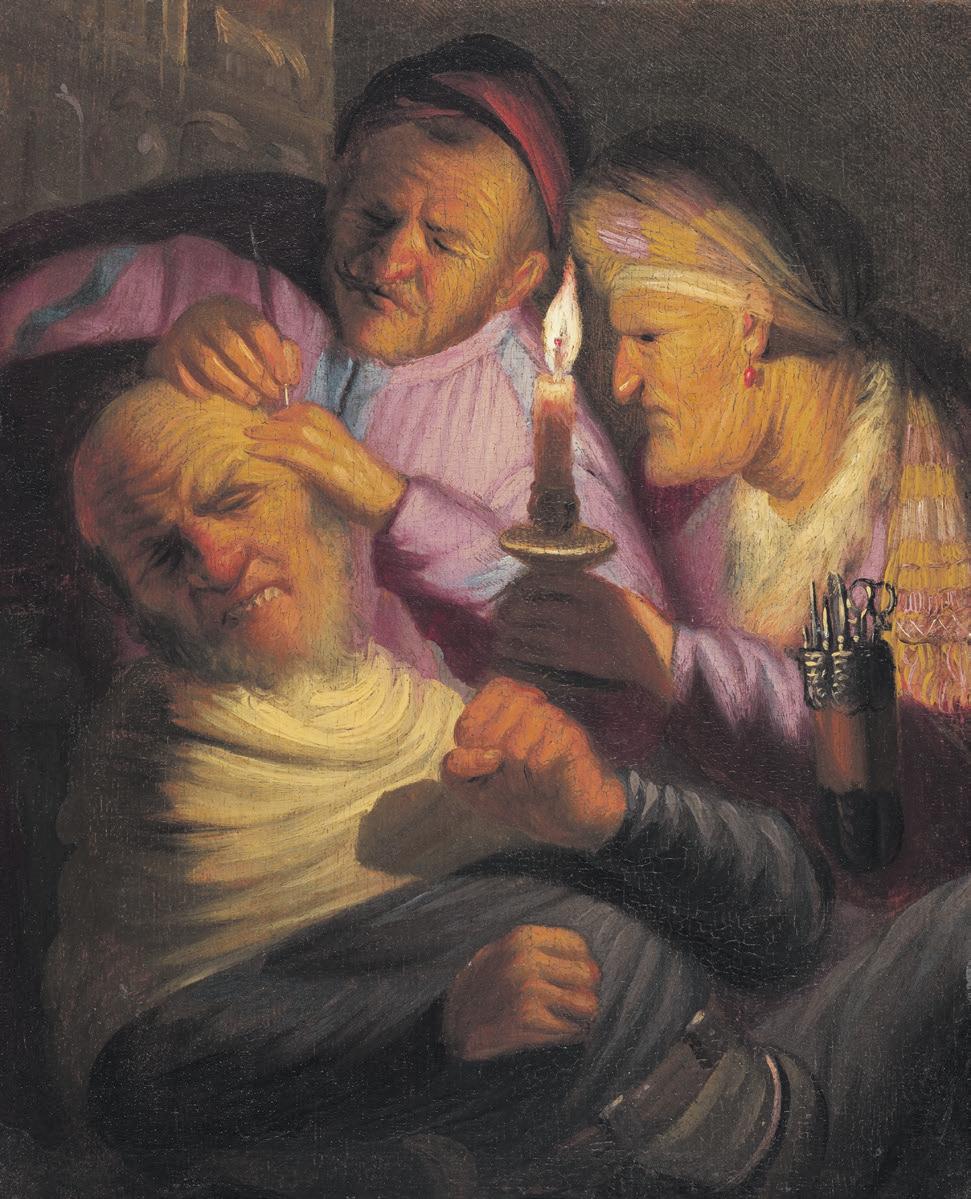


YOUNG REMBRANDT

An
Publisher’s price £25.00
Save £4.70
Booklaunch price £20.30 inc. free UK delivery
To buy this book, visit www.booklaunch.london/sales
IT’S A LONDON THING
HOW RARE GROOVE, ACID HOUSE AND JUNGLE REMAPPED THE CITY
Caspar Melville
Manchester University Press (Manchester), Softback, 288 pages, 13 b/w + 8 col illus., 138 x 216, November 2019, 9781526131256
By the end of the 1990s, London black music culture had moved beyond drum and bass. UK garage achieved hegemony over black clubbing for a few short years, subgenres like dubstep, wonky and bassline emerged and subsided, and a new rap-based genre— grime—emerged, developed by a younger generation in the same east London breeding grounds that produced jungle.
But jungle/drum and bass was not dead: it had just gone outer-national. As the internet facilitated the rapid globalisation of music cultures, drum and bass—the London contribution to black Atlantic bass culture—started influencing music production in America. Goldie recorded with KRS-One; hip hop legend Afrika Bambaataa added jungle into his DJ sets; and drum and bass producer Rupert Parke (Photek) moved to LA to make movie soundtracks.
Meanwhile, jungle DJs started to travel widely to cities across Europe, America and Australasia, where proto-drum and bass scenes emerged. Jumping Jack Frost claims to have DJed in all the major cities of the world and drum and bass clubs and festivals sprang up in Croatia, Sardinia (‘Sun and Bass’), the Netherlands, Japan, Singapore and Dubai. Jungle/drum and bass is, 25 years later, in rude economic health, providing viable careers for a wide range of London music producers and DJs, though its rebellious energy has been tamped down through its institutionalisation.
This has led some to mourn the decline in the UK of the last pre-digital ‘local’ music that was not reliant, as EDM and grime were, on YouTube or social media. For the music theorist Mark Fisher, jungle represented the last gasp of musical modernity’s ‘future shock’: ‘Play a jungle record from 1993 to someone in 1989,’ he wrote in 2013, ‘and it would have sounded so new that it would have challenged them to rethink what music was, or could be’, whereas ‘the 21st Century is oppressed by a crushing sense of finitude and exhaustion. It doesn’t feel like the future.’ Instead, we have been delivered into a world of endless recycling, defined by ‘retro-mania’—a world where the future has been cancelled.
For the cultural theorist Jeremy Gilbert, the problem is that jungle and drum and bass never delivered the political solidarities its sonic radicalism implied, serving instead to dissipate into political impotency. For Fisher, Gilbert and Reynolds, the idea of a drum and bass festival in the air-conditioned ex-pat enclaves of authoritarian Dubai or Singapore in 2018 would precisely symbolise the problem, their very definition of ‘post-future’ hell.
Publisher’s
Booklaunch price £14.68 inc. free UK delivery
To buy this book, visit www.booklaunch.london/sales
If, as I have done in this book, you place jungle in the context of the racialised divisions of London, the emergence of reggae sound systems in the 1960s and 1970s, the warehouse parties of the 1980s, rave and hardcore in the 1990s and the musical subcultures of UK garage, dubstep and grime which followed, jungle can be read as the sonic articulation of a racially mixed city. It is not segregated by necessity, as is reggae, nor hidden away like the warehouse parties; it does not resolve multicultural heterogeneity through pharmacological utopianism, like rave. Instead it marks the moment when London finally puts something back into the circulating flows of black Atlantic culture from which it has taken so much.

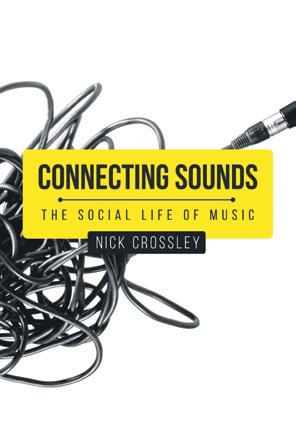

In the late 1990s, at the highpoint of drum and bass, one could be optimistic about transcending old divisions of race and the role music might play in this process. The emergence of jungle seemed to offer a multi-cultural alternative to ethno- nationalism. But such optimism now seems less plausible, even naive. Mark Fisher was perhaps right that with the arrival of streaming services like Spotify the possibilities of music delivering ‘future shock’ have been cancelled. What has happened to London in the early twenty-first century seems to confirm this view.
As early as 2004, Stuart Hall had already noted the trends that were undermining the promise of racially diverse cities like London offering more equitable multicultural futures. London, he argued, was being ‘reshaped’ by forces that were separating it into enclaves of ‘ultra high net worth individuals’ for whom property was investment not dwelling, defensive zones of ‘white flight suburbs and estates’ and ‘run down inner urban areas’ of social deprivation. Against the backdrop of neoliberalism, Hall saw little reason to be optimistic about London’s future.

This has had consequences for the spaces where ‘everyday mixity’ can emerge. The warehouses and club spaces of Bankside, Paddington Basin and Kings Cross, where club multiculture was incubated, have been transformed into high-end residential, commercial and leisure zones, promising luxury living, innovation and, as the South China Morning Post put it in 2017, exceptional returns for Hong Kong investors.
In 2018 the London-based genre drill, a ‘dark and nihilistic’ adaption of Chicago rap made predominantly by black working-class youth from the housing estates of Brixton Hill, Tulse Hill and Kennington, became subject to a moral panic for its glorification of violent crime and drug dealing. In May 2018 YouTube removed thirty videos by London drill artists, at the urging of the Metropolitan Police, for their ‘incitement of gang violence’.
Before the moral panic around drill, London musicians had been making links between the rise of plutocratic money-laundered London and the rise of violence on the streets in ways politicians had failed to do. In ‘Hangman’, released in February 2018, the Streatham grime/hip hop artist Dave provided a sonic counterpoint, addressing knife crime and postcode wars—‘too many youts are dying and I’m sick of it’—over a heart-breaking piano riff and deep sub-bass. The recent jailing of his brother and the rise in stabbings—‘Snaps in a prison cell, bodies in a coffin’—led Dave to conclude that ‘London is cursed, this city’s got a problem’.
But there are rays of light. Though drill could be read as both a cry for help and a bitter warning of the consequences of urban racism, it is simultaneously building an audience far outside the confines of south London estates.
There is an analogy here with the story of grime, the London-born British rap genre which emerged from the estates of east London at the end of the 1990s, drawing on the reggae sound system, jungle and garage, but placing the MC—the rapper—at the centre. As journalist Dan Hancox shows in his definitive grime history, Inner City Pressure (2018), the genre’s restless inventiveness allowed it to build a global following and become an established pop genre, with Thornton Heath grime artist Stormzy in 2018 establishing a publishing imprint with Penguin, endowing scholarships for disadvantaged youth at Cambridge University and headlining at the Glastonbury Festival in 2019.
Grime and drill are, in many ways, distinct from the dance multicultures of rare groove, rave and jungle. They are not in a strict sense dance genres, but, as with reggae, garage and jungle, though most of grime’s producers are black, the grime audience, both in London and globally through the internet, is decidedly multi-cultural (there is even a passionate grime scene in Japan).
Alongside the rise of grime has come a renaissance of London jazz. Live performances by an array of new jazz acts have emerged in the city, offering a viable alternative to disc- based club culture. These are influenced by a range of American jazz styles from hard bop to spiritual jazz, by Nigerian Afrobeat and by the reintegration of jazz into American hip hop by LA artists like Flying Lotus, Thundercat, Kendrick Lamar and Kamasi Washington.
This new jazz scene has emerged in small venues like the Total Refreshment Centre in Stoke Newington (currently suspended), the free jazz jam Steam Down in a small bar in Deptford, and the Mau Mau Bar in Portobello Road and at established venues like the South Bank and the Roundhouse. This scene—which includes Ezra Collective, Sons of Kemet, Kokoroko, Binker and Moses and the Seed Ensemble—has been nurtured through a network of music schools, training programmes like the one run by the Tomorrow’s Warriors organisation and funding provided by the Arts Council and PRS foundation.
This jazz scene—unlike the white middle-class acid jazz scene of the early 1990s—is driven and supported by young black multicultural Londoners, with a far higher proportion of prominent young women—for instance tenor sax player Nubya Garcia, composer and bandleader Cassie Kinoshi, trumpeter Sheila Maurice-Grey and multi-instrumentalist and producer Emma-Jean Thackray.
Both jazz and new forms of rap like drill and Afroswing reflect the changing composition of multiculture in London. A shift in London’s black population since the 1980s (which saw a large influx of migrants from Nigeria, Ghana, Sierra Leone, Congo and Somalia) has meant that black London is no longer majority Caribbean, and this has had an influence on the music being produced in the capital. Numerous jazz, grime and Afro-swing artists—Skepta, Dizzee Rascal, Lethal Bizzle, Donae’o, Sneakbo—hail from West African families, and the influence of the West African music they heard at home is placed in juxtaposition with the reggae, hip hop, rave and garage music of the city, producing distinctive new hybrids.
As I write these last lines, London, as viewed through its black music multicultures, seems to be looking in two directions at once. Drill is
In British society, Muslims have been prioritised as problematic: sexual predators, radical terrorists, social and spatial segregationists, not to mention chronic underachievers. There are a host of other markers through which Muslim identity is rehearsed as challenging, particularly through pre-existing narratives that seem to do little more than perpetuate notions of danger, difference and threat.
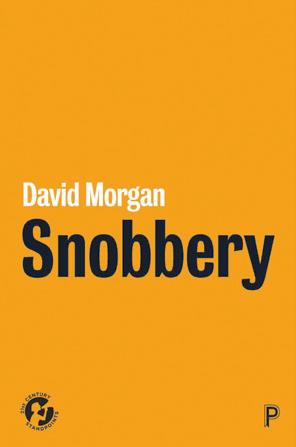
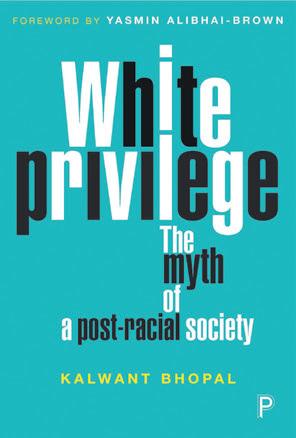
All of this may seem out of place in a book about cars. However, this is also a book about how we, as social beings, construct ourselves and others, at least in part, through our understandings of car culture, to pinpoint how identity is carried, presented and finessed by the car. And here, connections between the car and identity result in a need for us to make sense of what we encounter: an expensive car in a seemingly ‘deprived’ area may elicit the need for some form of logic to explain the car’s presence—the driver is a rich landlord, a visiting celebrity, a criminal. Once such imaginative but coherent impressions are unpicked, a more comprehensive, in-depth and grounded understanding of social situations is revealed.

This sociology includes not only the voices of research participants but also informal, acutely non-academic field notes, written over the span of the research. These are presented not as a means of somehow trying to demonstrate street credibility or some unresolved creative authorial ambition but to offer an unambiguous form of depth and insight that is not always present in sociological work. Being an insider researcher can result in the boundaries between the personal and the professional becoming porous; you are a researcher, but you are also one of those being researched. Acknowledging this too may have costs and implications, however:
It does bug me a little. I’m out there and talking to people about their cars and all that, trying to convince them that I am genuinely interested in them—and especially what they’ve got to say about cars. I might see someone, or a car, that looks interesting. Light goes on in my head and I’m now on—in recruiting mode. I’ll go up to them, offer a Salaam and then maybe say something to them about their car. It’s like I’m chatting them up, giving them compliments—this is probably how people who ‘groom’ operate. So now I’m a car groomer. Sometimes they even ask me what it’s like working at a university. Some of them even say ‘Ma sha Allah’ [God has willed it; an expression of appreciation/happiness], like they’re proud of me which I guess they might be—me being like them, but somehow breaking my way into a middle-class profession. I wish they didn’t claim me because now I’m a role model; now I’m a token. But you know what?
All that’s fine—it’s the price of doing business. Problem is, there always comes a point where I have to remind them that I am also researching and that I will be writing about this, possibly about what they’ve got to say. It does feel odd, forming these relationships in a natural and quite organic way, only for it all to be risked by a tape recorder. I know. I am being neurotic. If I was a social worker, I’d be calling myself reflective. (Field note, March 2016)
Most of this entry is probably based on a mild habit of being fixated about arguably minor aspects of research as process. However, within the extract, it’s clear that first, ethnography can become layered with complexity and impact on the researcher and participants. It may be that they see me, relatively speaking, as successful and that elicits a sense of ‘ethnic’, class or even local pride. Conversely, however, since minority ethnic academics are relatively rare, when they are present, regardless of their specialism, some can be seen as ‘responsible for race matters’. This is further reinforced because ethnography allows for the professional and the personal to merge comfortably, and at times, unnoticeably:
Seems I’m always on these days. Everything is data. Even when I’m at home, doing nothing ‘ethnographic’, along comes Top Gear and I start making notes about the cars that the presenters are fawning over: it’s always one or the other with that show—they start with ‘This is a piece of crap’ and then, usually Clarkson, growls something like ‘But it all makes sense when you press this button …’. And even when I’m on the road, on the way into work or back, usually rush hour, I see private plates, tinted glass, custom paint jobs, big exhausts, whatever. But also weirder stuff, things people do when in their cars: people picking their noses, or bouncing around in their seats while listening to music, putting on make up, arguing, laughing, daydreaming. People even cry in their cars. Sometimes, that little metal box seems like the
safest place on earth where you can do what you want, be who you want. How much of this stuff do I actually cover? I mean, where does this thing end? (Field note, September 2013)
Mediated and fictional cars are cultural reference points and become meaningful at the level of personal biography. I therefore make use of various reference points (film, television, popular music and childhood play) where the car is used to produce meaning and value, as well as in relation to advertising and commodity fetishism. I then explore how cars are used within hip-hop-oriented popular music and videos.
Filmic representations are important and were referenced frequently among participants. The following extract, while focused on a car that is probably less relevant to most personal histories, nevertheless holds some emotional detail that could apply to many of us:
The Batmobile in that first Batman film, the one with the Beetlejuice guy in it that was my first car crush if you like. I used to have dreams about that car. I must have been about ten when it came out. I watched that film, I don’t know, probably hundreds of times. It was a big deal back then but for me it was because of the car. I mean, it looked amazing, it looked like something else. (YK, 36, male, 23 July 2015)
This interview, conducted with a self-confessed car ‘fanatic’, was one of several in which childhood relationships with and understandings of cars featured as formative. YK illustrates how even fictional cars may help develop what become normative understandings of aesthetics, function and aspiration. This particular incarnation of the Batmobile was located in a dark, gothic and, albeit darkly and comically so, cinematic Gotham City. The Batmobile was spectacular, perhaps ‘magical’, and signified a range of meanings; loaded with gadgets, it was big, powerful and dark and looked ‘aggressive’, a matter that was probed further:
YK Some cars, they look really aggressive—don’t say they don’t, because they do. Audis, Fords, Vauxhalls, Jap cars—not even the sports version ones; a lot of cars, they look strong; just the way they’re designed. In the 1920s and 1930s, you had these great big sports cars—they weren’t aerodynamic, but they were ripped; like they had muscles, you know. But like modern cars, even ordinary cars, nowadays especially, they’ve become a bit more sharp in design, maybe because we want a car that looks strong.
YA So, and that’s what the Batmobile was about, then.
YK Well, I mean, if you’re Batman, then yeah. I mean, anything goes for that guy—he’s Bruce Wayne, bloody billionaire and all that.
YA Not everybody’s got money, though. Not everyone’s Bruce Wayne.
YK No one’s Bruce Wayne. You’re missing the point, Bro— when I watched that film, I knew it wasn’t real. When you’re a kid you think that you could make your car special like that and that’s what’d make you special. You could make it look how you wanted it to look.
YK talked about the toy cars of his childhood, most of which were designed to look powerful and exciting. As he grew older, he had more sophisticated toys, including remote-control stunt cars as well as one toy designed to withstand high-speed collisions.
LG It is ridiculous, if you think about it. Most people do this: they always change their cars because, because why? They don’t need to, do they? But they think buying a car, it’s an exciting thing to do and it’ll make them happy. Back when you were younger, I bet you didn’t change your car every three years.
YA Drove them until they died.
LG Because it was just a car, then. It’s more than a car, now. It’s you. But most people just fancy a change. It’s the done thing.
YA Sort of standard practice.
LG Standard practice now. And they don’t just go like-forlike. No, they’ll upgrade. It has to be something better as in comparison to what they’re driving now. Like start off with a standard A3, then jump to an S Line A3. Then S Line A3 to, I dunno, a Mercedes Benz, and then three years later, Mercedes to a newer Mercedes. It never ends, does it? (LG, 30, male, 17 February 2019)
Commodity fetishism, developed by Marx in Das Kapital
Publisher’s price £14.99
Save £1.80
Booklaunch price £13.19 inc. free UK delivery
To buy this book, visit www.booklaunch.london/sales


A century of
Printing from flat blocks of wood only arrived in Europe from China in late medieval times. It was brought to a fine art by the German Renaissance artist Albrecht Dürer (1471–1528) but relied on pen drawings that he made on the block’s surface. He would carve away at the surface to leave untouched only those areas covered by the black lines of his drawing, which would then pick up ink from a leather dabber.
This approach is known as the ‘black-line’ method. It involved some amazingly skilled craftsmanship to preserve, for instance, the appearance of delicate cross-hatching, yet the aim was to reproduce the details of what the pen had drawn, in a medium that facilitated mass-dissemination rather than an exploration of any new visual effects.

Nearly three hundred years later Thomas Bewick (1753–1828) in Newcastle reversed the process by introducing ‘white-line’ engraving. Here, the engraver uses stipples of dots and lines to create light rather than replicating darkness. This has a characterful ‘look’, quite different from a pen drawing, rather like painting with a very fine brush in white gouache on black paper. Character results also from the different cutting tips of the different engraving tools, each imparting marks quite unlike those of a pen nib.
Bewick produced wood engravings rather than woodcuts—that is, prints produced from a block of end-grain wood, traditionally boxwood. The tree trunk is cut into blocks planed to a level surface of glass-like smoothness, into which the artist engraves using fine steel tools traditionally associated with metal engraving, before applying a thin layer of printing ink to the wood’s surface and taking a print by hand-rubbing the back of the printing paper with a spoon or by using a printing press. The technique is widely credited to Bewick and may thus be the only art form that can genuinely be said to have originated in Britain.

Boxwood is good for engraving because the finest marks can be incised on it with absolute precision to create images of far finer detail than is possible in side-grain woodcuts or pen drawings. Additionally, each block can withstand thousands of printings without signs of wear. Unlike metal (usually copper) engravings, which facilitate images of comparable precision, woodblocks can be inked and printed more quickly and cleanly. They can also be locked into frames with accompanying wood- or metal-type to print entire pages of image and text in one go, and can be printed dry whereas metal engravings only print well on damp paper.
These practical features made wood engraving ideal for illustrating newspapers and books before the technology to mass-produce photographs was invented. It also meant it was mostly used to copy the drawings and paintings of other artists. So, while Bewick could be described as the first artist-engraver, observing nature and rural life, his medium was quickly appropriated to serve commercial needs and so became associated almost entirely with mechanical reproduction rather than originality.
Around the start of the 20th century, a small number of artists including Lucien Pissarro (1863–1944), Eric Gill (1882–1940) and Robert Gibbings (1889–1958) reacted against this and tried to explore the creative potential of white-line engraving, especially in making beautiful books with an intentionally ‘hand-crafted’ aesthetic. Other artists including M.C. Escher, Gwen Raverat, Paul Nash, Leon Underwood, Iain Macnab, Gertrude Hermes, Agnes Miller Parker and Clare Leighton were then inspired to use wood engraving to create independent prints that explored the wonderful effects that white-line makes possible.
Raverat, who lived in France for some years, brought impressionism to engraving in stippled, tonals images without outlines. Macnab—founder (1925) and principal of the Grosvenor School of Modern Art—was a wood engraver whose modernist landscapes such as ‘From my Window, Majorca’ demonstrated the huge impact of strongly contrasted black and white shapes within the medium combined with dynamically rendered tonal ranges. Eric Ravilious brought a joyous quality of pattern-making and innovative and stylish design qualities to wood engraving. Hermes, arguably the greatest exponent the medium has yet seen, brought dynamism and energy to it with images such as ‘Undercurrents’ and ‘Fathomless Sounding’, full of effortlessly fluid draughtsmanship and an ability to move seamlessly between black-line and white-line styles to compelling visual effect. More recently, Edwina Ellis’s multi-layered colour engravings and my own wood-engraved collages on unusual surfaces such as ceramic, slate and glass have continued to take the medium in new creative directions.
SCENE THROUGH WOOD A CENTURY OF WOOD ENGRAVING

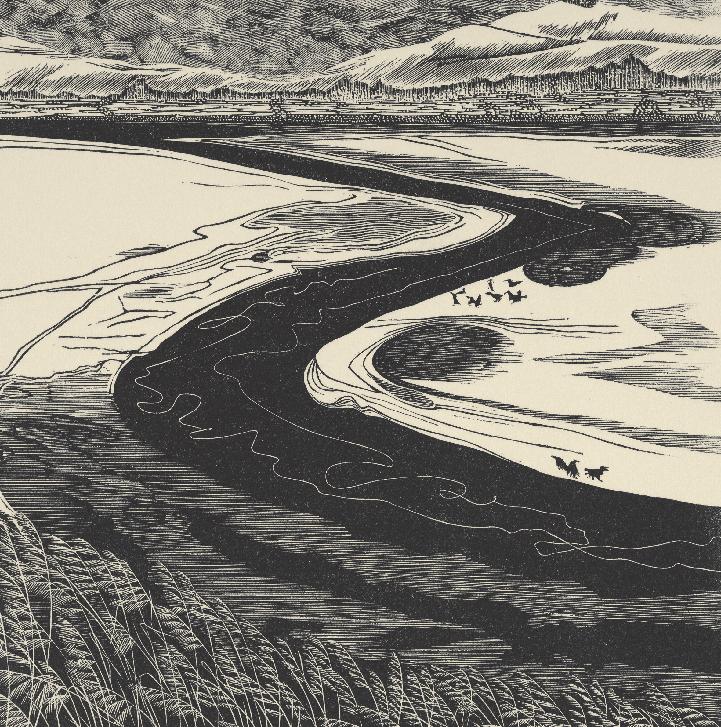
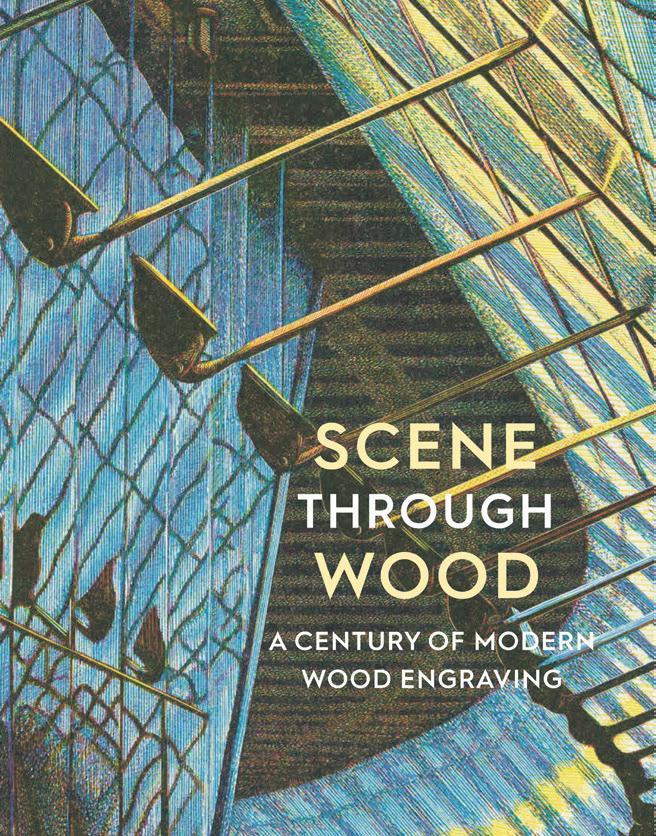
Anne Desmet (curator)
Ashmolean Museum (Oxford), Softback, 256 pages, 300 illus, 222 x 410, March 2020, 9781910807378
Publisher’s price £25.00
Booklaunch price £21.99 inc. free UK delivery
To buy this book, visit www.booklaunch.london/sales
Page 12 from top to bottom
THOMAS BEWICK 1753–1828
The Traveller 1795 (detail)
Wood engraving on white paper
© Ashmolean Museum, University of Oxford
ALBRECHT DÜRER 1471–1528
Christ in Limbo c.1510 (detail)
Woodcut on paper, 39.7 x 28.1 cm
© Ashmolean Museum, University of Oxford
GWENDA MORGAN 1908–91
Two Houses 1967
Wood engraving on white paper, 10 x 15 cm
© Estate of Gwenda Morgan
Page 13—from left to right
CLIFFORD CYRIL WEBB 1895–1972
Blast Furnaces 1938 (detail)
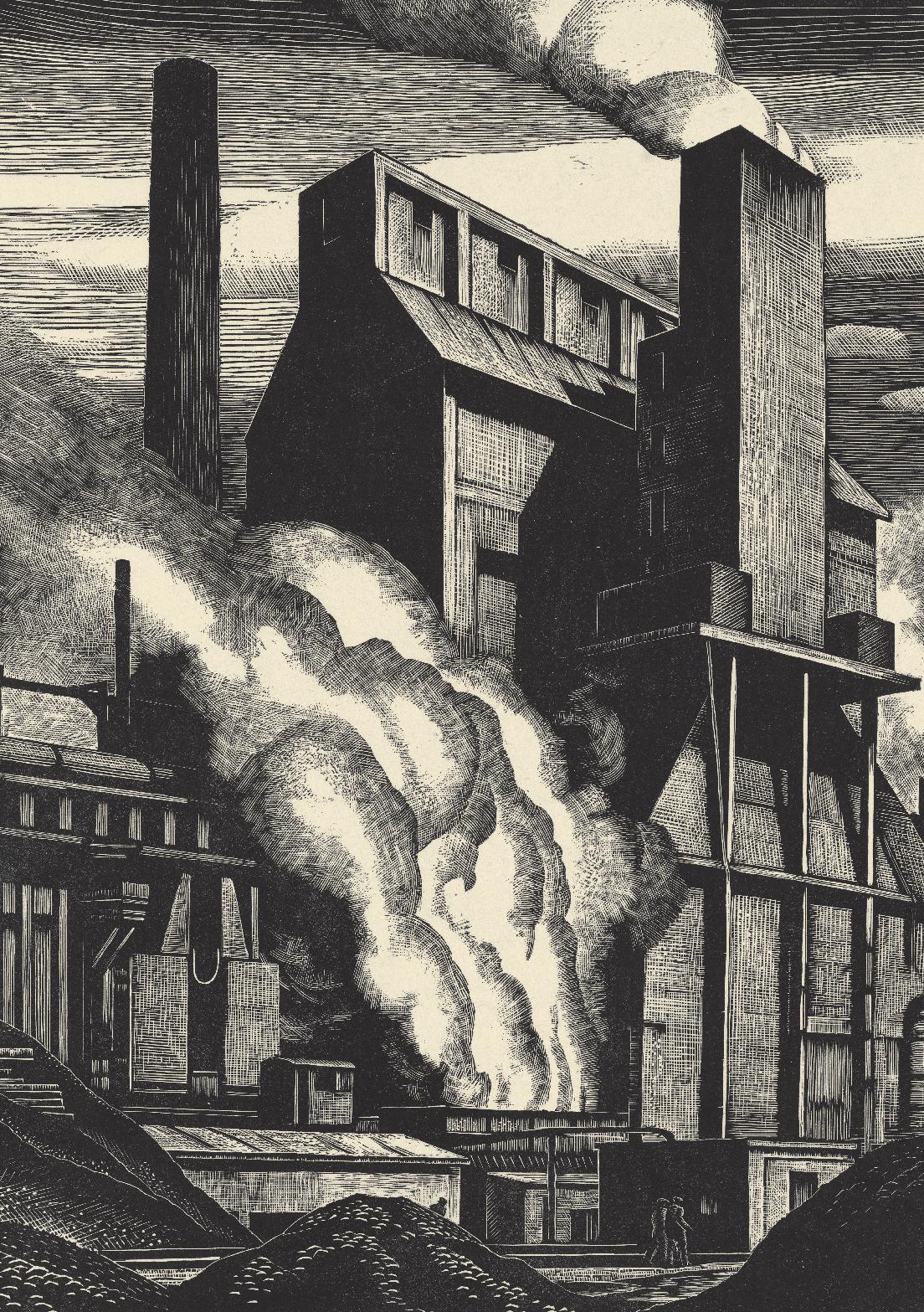
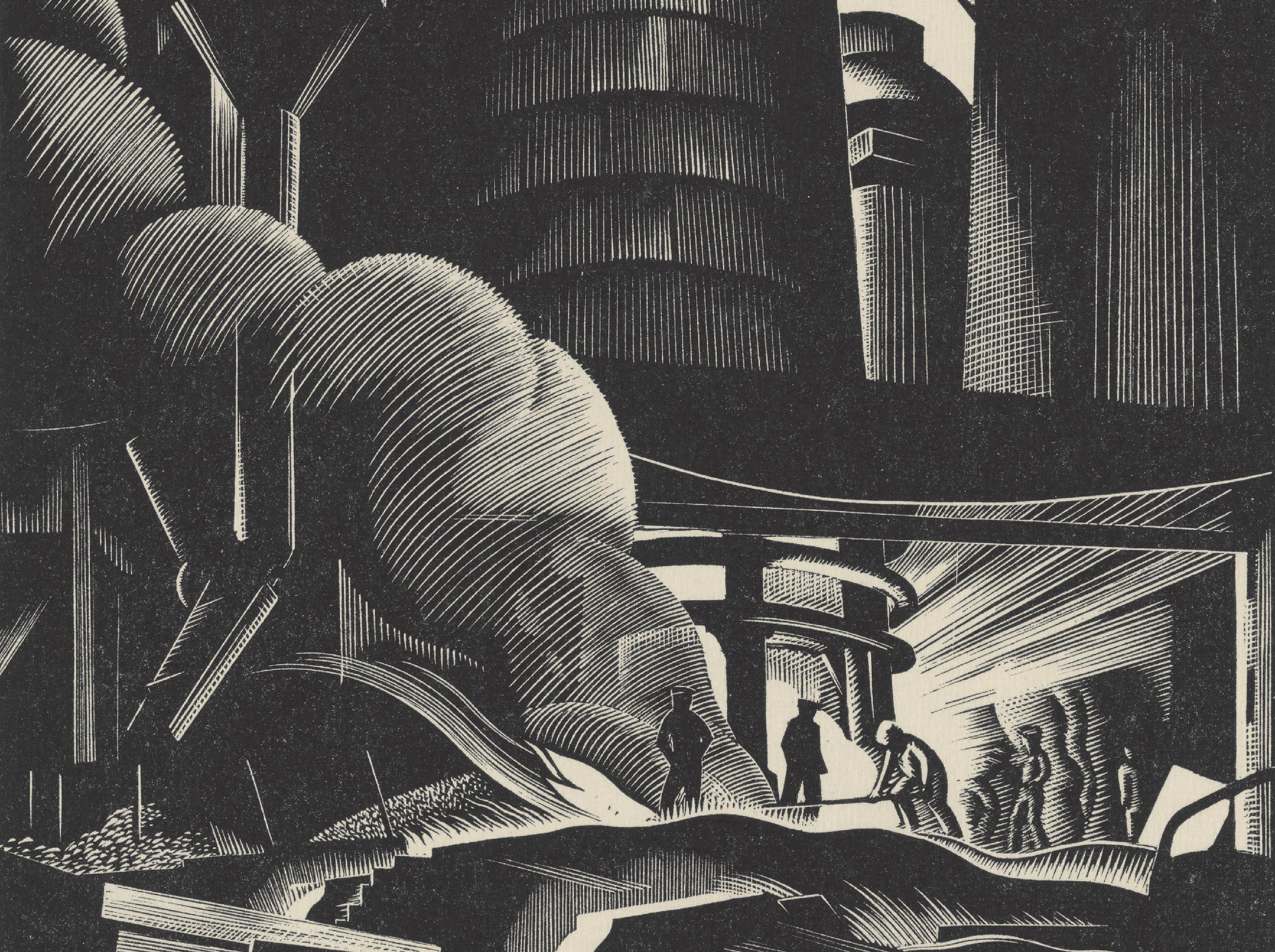
Wood engraving on white paper, 19.1 x 13.4 cm

© The Estate of Clifford Webb
NORMAN JANES 1892–1980
Coke Ovens 1935
Wood engraving on off-white paper, 25.2 x 19.2 cm
© Estate of Norman Janes
GEORGE TUTE 1933–Mephistopheles Showing Faust
The Heavens aka Mephistopheles
Shows Faust the Motions of the Planets 1995 (detail)
From Dr Faustus. Folio Society, 1997. Wood engraving on white paper, 17.5 x 12.4 cm
© George Tute
SARAH VAN NIEKERK 1934–2018
The Severn in Winter 1997
Wood engraving on white paper, 11.4 x 11.4 cm
© Estate of Sarah van Niekerk
MONICA POOLE 1921–2003
Dead Trees Sheppey 1976
Wood engraving on Basingwerk Parchment paper, 19 x 16.9 cm
© Estate of Monica Poole
Mirror Image 1993 (detail)
Wood engraving (boxwood) on white paper, 15.4 x 8.7 cm
© Estate of Monica Poole
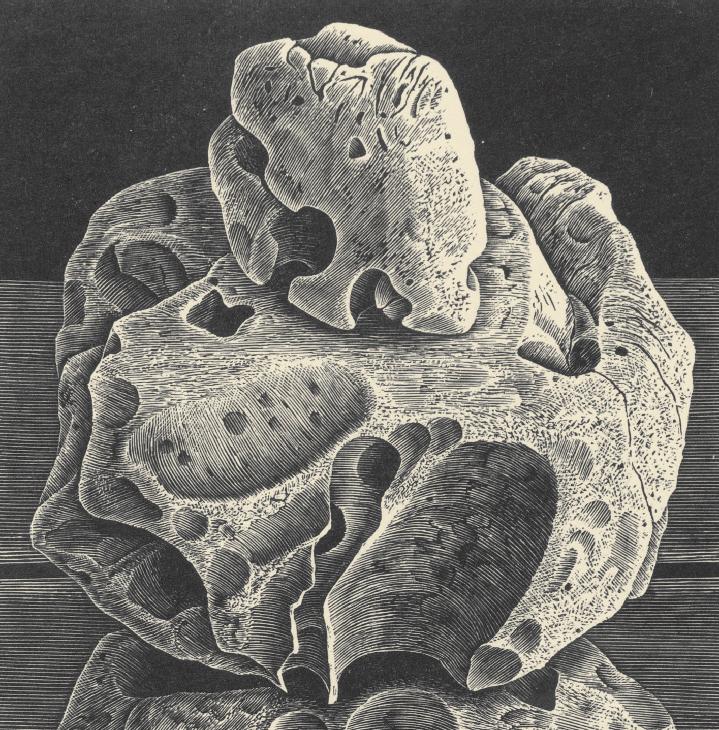
In my mind, I’d thought it wouldn’t take long: we could drive to Rashid’s house in less than ten minutes. What I’d entirely failed to consider was the possibility, the likelihood, that the house was being watched. Had I worked through the logic of my own argument, that Rashid was valuable alive—as hostage, as leverage—I would have realised that monitoring the movements of his family would follow. As it was, I drove an armoured car almost to the front door and hopped out as unconcerned as I would have been if I’d been visiting my parents for Sunday lunch.
Slightly against my better judgement, I told Lucie and the others to go on ahead. My thinking was that if Rashid’s family were aggravated by my last visit, they’d hardly want another bunch of army and police turning up mob-handed and unannounced. As it turned out, I needn’t have worried.
I knocked at the door and waited for an answer. There was a dog barking inside the house, towards the back. I knew straight away that the place was empty. The windows at the front were shuttered and there was something about the dog’s bark, the way it echoed, that gave the impression that the dog had been on its own for some time and had done a good deal of barking into vacant space.
I walked around the side of the house. I knew it was a risk to leave my vehicle unattended, but I was only going to be a few minutes. I switched on my torch and threw the beam across the side wall. It was pitted with holes from various skirmishes and slabs of plaster had fallen off, leaving patches of exposed concrete. Threads of plant had begun to grow in the holes.
I glanced at my watch. I didn’t want to overrun the patrol and start questions buzzing back at base.
Was I scared? I don’t think so. Naïve, I think. Actually, I was more puzzled than anything. I couldn’t imagine where the family had gone. It wasn’t safe for anyone to travel far, and if Rashid had the chance to make contact, he would try his home first.
There was another possibility, and that was that a member of the family, perhaps the family as a whole, had been threatened. Collaborators and their relatives were frequently intimidated or assaulted, even murdered. If they had been led to believe they were in physical danger, official advice about the safety of travel would count for nothing. The family would have packed up and headed for the hills without a moment’s hesitation. Rashid might have told them to. He might have got through on his mobile and told them to get the hell out.

I shone the torch into the back yard. The flash of light drove the dog frantic. I could hear it throwing itself against a door. The last thing I wanted to do was attract the interest of neighbours, so I switched the torch off.
The barking suddenly ceased. The silence was shocking. I felt the heat in my face. It was as if a hair drier had just been thrust under my helmet. Sweat ran into my eyes. I looked back to the street and the army Land Rover parked at the front. Time was running out. There was still a chance we could return to the compound and no one would be the wiser, except for the lads on duty at the gate, who would probably give me the nod.
He was being extremely cautious, like a dog that’s sniffed something he doesn’t trust.
He called out, flung his free arm in the air, beckoning. A second man came up to him and tried to peer into the dark alley. They moved forward, maybe a metre, maybe more, talking agitatedly.

I couldn’t move. I thought about my gun and just knew I’d be dead before I touched it. The cramp in my calves was agony. I must have been squatting by the wall for ten minutes by now, and I was desperate to ease the pressure. It felt like I was seconds away from crying out.
The first man yelled into the darkness. I couldn’t make it out, and I wouldn’t have understood what he was saying even if I could.
And yet, I did know. He was bluffing. ‘We know you’re in there! Come out, and you won’t get hurt!’
Like fuck!
As abruptly as they’d appeared, they went. The two in the alley turned, joined the third man, and then I could no longer see them. I waited, eased myself down into a sitting position, stretched out my legs. The ache in my calves intensified for a few moments, then began to fade. I thought about taking my helmet off, just for a second or two, but decided against it.
That formidable silence again. There were insects close to me, busy, magnified by the alley’s walls. But behind them, behind their rhythmic twitch, out there, was a deep silence. It was the interval between symphonic movements, the sound of anticipation. Of fear.
Gradually, taking care to move as slowly as I could, so that all my wretched belts and buckles, the sodding flaps and bits of kit hanging on me, my torch and radio and gun, made little or no noise, I stood up. I tried to make out any movement around or beyond my armoured car, the slightest human hint. There was none.
I decided not to risk the torch and started to make my way towards the street. I hated the crunch of my boots on the alley’s concrete floor. Each step seemed to echo and linger. Inside, I was pleading with my body to be quiet.
It felt like an age before I reached the street. It was empty. Corporal Lucie and the others were nowhere to be seen, presumably pinned down with the police lads further into town. I took a walk around the vehicle, had a quick look underneath. Nothing. No signs of damage. Nothing had been attached to it. Everything was in order.
I had no time to reach for my weapon or shout out. An arm was round my throat and I immediately lost my balance. I went down like a bowling pin. My helmet was ripped off and some sort of sack was pulled over my head. I felt my legs being tied together.
They lifted me up, carried me a like a corpse. The pain in my throat and neck was now agony, and I struggled to breathe in the heat. The sack pressed against my face and every time I took a breath, the sackcloth clung to my nose and mouth. I felt like my head would burst. The heat felt hot as fire.
It happened so quickly. Even in the quiet of the street, I had no sense of their approach.
To buy this book, visit www.booklaunch.london/sales

The silence was broken by rapid firing: Kalashnikovs, I was certain, and slightly later what I assumed was returned fire from our lads. I was about to run out—I needed to join them—when two men appeared at the end of the alley. Bearded, black beards, armed. I saw them, dimly, just for a moment, hovering around the front of the vehicle. They walked back alongside it, out of sight, giving it the onceover. They appeared not to have any light with them.
Had they spotted me? The chances were they’d seen my torch splashing light over the house.

The gunfire stopped.
I crouched down, tried to squeeze my body as close to the wall as I could. The two men re-emerged at the end of the alley. At this distance, it was impossible even to guess who they were, except to say that they were probably local militia. I kept still and tried not to think about the heat and the almost irresistible urge to get my helmet off and let some air onto my face and head. My skin was wet.
One of them started up the alley. He’d raised his gun and I kept thinking: he’s seen me, he must be able to see me down here, he’s looking straight at me.
Behind him now were two other men. So, there were three of them, at least. As far as I could tell, they were identical. In their flat caps, their beards, their long cloaks, their guns, they were uniform. They were even the same average-looking height.
The man in the alley took a couple more hesitant steps towards me. The barrel of his gun led straight to my head.
I was pushed into a vehicle. They couldn’t have cared less whether I was injured in the process. My head collided with the roof as they pushed me down and threw me onto the back seat. I caught my face on the edge of the door. From the other side of the vehicle someone else started to pull at my arms, dragging me onto some kind of bench seat. My legs were pushed up under me so that they could close the doors. I tried to shout, to get their attention, so that I could at least move myself, but either they couldn’t hear me through the sack or they were too stressed to listen. A pain tore through my calf and I thought I would pass out. The engine fired up and the car or whatever it was jumped forward. I rolled on the bench and dropped to the floor.
If I’d given it any thought whatsoever, I wouldn’t have gone there. I was, after all, responsible for ten men: Corporal Lucie, three privates and half a dozen local police recruits. Apart from the stupidity of the plan, it was breaking regulations to leave a patrol without an officer, especially at night. I guess it was a bit of the younger Steve re-surfacing.
They pulled the sack from my head and pushed me through a doorway into a dark room. I had no sense of its size or whether there were things like furniture that might trip me up as I stumbled around the space. The soreness in my throat still hurt, and I’d bruised my forehead and the upper part of my arm in the
Unlike his parents in Hampshire, Stephen Padgett has more than Bach to challenge him. He’s on active duty. In
We are afraid of forgetting. From school days on, we are chastised for it, and as we sense ourselves ageing we become terrified of any forgetfulness, as if it can only be a premonition of much worse to come. At school, we got gold stars for remembering and now in our diaries dutifully note birthdays and wedding anniversaries shameful to forget.
The diaries themselves are usually printed with reminders of dates we are expected to remember—Mother’s Day, Father’s Day, Valentine’s Day (such is modern romance). The United Nations encourages us to remember a quite different list, currently extending to 156 days, beginning with the International Day of Commemoration of the Victims of the Holocaust on 27 January and ending on 20 December with International Human Solidarity Day.
The month-long breathing space before it all starts up again is partly owing to the congestion created by different parties of organised Christianity remembering saviours born on different Christmas Days, partly also to the fireworks and inebriation obligatory at New Year.
Some of the UN days have a tragic connecting logic: World Tourism Day on 27 September is followed on the 28th by World Rabies Day. Other juxtapositions suggest something else: World Philosophy Day on 15 November is shortly followed on the 19th by World Toilet Day, a delight for fans of Rabelais and Mikhail Bakhtin alike.
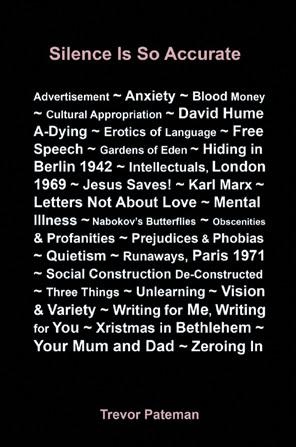
Our obsession with not forgetting is exhausting. We try to remember too much and we don’t know how to prioritise, as the time managers might put it. As a result, not only do we have over-stuffed diaries but—to take something I want to discuss—over-stuffed city streets cluttered with bronze and stone effigies, monuments in perpetuity to personages who were erected in order not to be forgotten.
Many tourists visiting London will know that it is Nelson on top of the column in Trafalgar Square, but other characters are memorialised there, asking for whose names would put an end to anyone’s aspirations to become a TV quiz millionaire. Nobody knows, nobody cares, but they include George IV (who contends for the title of England’s most dissolute king), General Sir Charles Napier (‘the best way to quiet a country is a good thrashing’) and Major General Sir Henry Havelock (Memoirs of the Afghan Campaign).
At the edge of the square, King Charles I on the inevitable horse once had a backdrop of large bold letters drawing attention to Coles’s Truss Manufactory. The letters have long since been removed (despite the apostrophe being correctly placed). But take down those other monuments to past glories because we now no longer have any use for them or have simply forgotten? Oh no. They are history, they are heritage.
True, no one is corrupt enough to claim that the monuments have artistic merit. I defy you to find an aesthetically pleasing, artistically significant monument to a dead king or general bigged up on a plinth or a horse or both. You might, I suppose, try the Bronze Horseman, the equestrian monument to Peter the Great in St Petersburg. But look again and you’ll see that it’s the nameless horse which is the success story, not the toy rider. One day they will erect Vladimir Putin and sit him on a motorbike; there will be much knowledgeable discussion of the bike.
I realise that there are people now who want to bring more balance, more diversity, to our city streets and squares, people who want to big up a different kind of person. It’s been done recently in London, where in Parliament Square the bronze effigy of a suffragette now stands among the dead men: Millicent Fawcett holding a tea towel to advertise the firm of conceptual artist Gillian Wearing. It’s dire, and necessarily so. If imagination does not extend beyond bigging up in the traditional mould, then you reduce the challenge and energy of your revolutionaries to fit the smugness of your generals, your slavers and those famous only for their accident of birth.
Get rid of them all. Have the courage of your own forgetting. But also have the courage to remember in different ways, something we have limited so disastrously.
Memory starts out as personal memory. In wartime, it is quite different; likewise in a mining disaster. When many die it is a community which is affected as well as families and individuals. So instead of those who have not suffered rallying round those who have, we have shared suffering, shared grief. In that context, it is not surprising that people should look towards shared remembering.
Grief fades with time and so too does memory. If we are afraid of that, or guilty about it, then one function of a shared ritual of remembrance is to keep the memory alive, perhaps even revive the grief. In some ways it seems a bit perverse; in other respects, we might argue that nothing is ever truly forgotten, no grief ever truly exhausted and so it is
better to return, from time to time, to the scene of the crime committed against our hopes and happiness. Or at the very least to show some respect, especially to the memory of those who died that others might live.
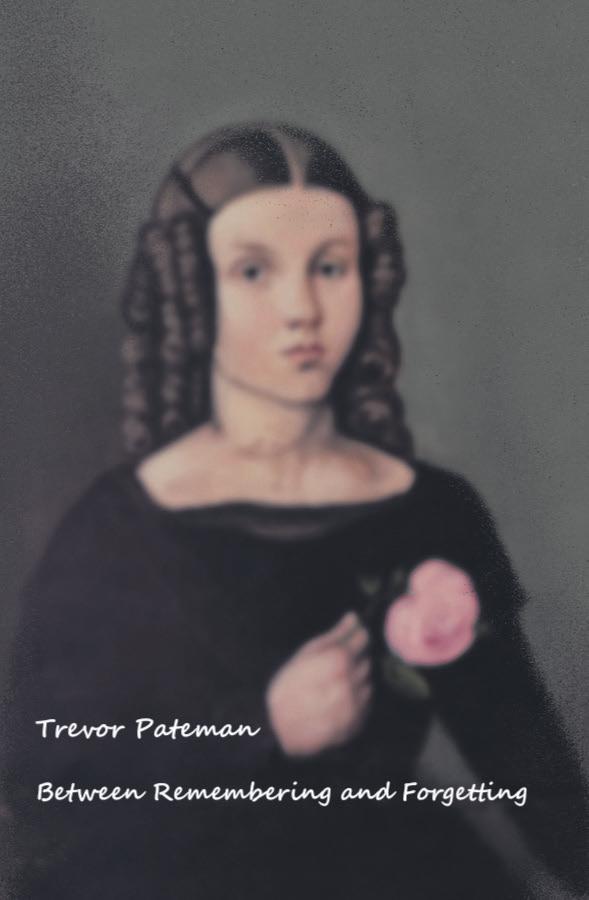
The last Holocaust survivor will die in the near future, but the Holocaust will take much longer to die in the lives of its children, grand-children, great-grand-children. Eventually, however, it will become one of those things which took place a long time ago and in another country, rather like the Conquest of the Incas which is not now marked by solemn occasions anywhere, though its horrors have been amply documented in historical works.
But it is not just for short-term memory purposes that people want the monuments, the commemorations, the days of remembrance; they want them to remind us of something, to teach us a lesson. We learn early on that life is about being taught lessons. The Mount Kembla mining disaster in 1902 reminds us of the negligence of mine owners, one of the most enduring negligences, still delivering its deaths on every continent. So the point of the commemoration, one might say, is directed beyond and outside the circle of those who were most immediately and intimately affected.
That, of course, means that there is the possibility of a tension arising between the needs of those directly in line of the hit and the motives of activists and ideologues. It is a commonplace that suffering is hijacked, agitators heading to the scene, the current disaster cut and pasted onto the standard issue placard. The Holocaust is well on the way to suffering a similar fate, not so much remembered and grieved over as used to coerce.

Such mismatches between suffering and how it is made use of are most obvious in the ways in which nation states officially recognise the war deaths of those they have sent to fight and, sometimes also, the civilians who were victims of the enemy. In the old Soviet Union, the party line dictated that the 20 million casualties in World War Two could only be memorialised by huge and brutal installations which suggested the crushing might of Russia and the iron will of its fighters. But those memorials, lacking any elements of simplicity, intimacy and privacy, must surely have left those still grieving with feelings of awkwardness and confusion. It could have been done differently.
One day during a 1998 holiday, I walked around the National Gallery of Armenia in Yerevan and noticed a very large painting (196 x 250 cm) depicting all kinds of simple but colourful flowers stuck in jam jars, often only a few to a jar, lined up in rows as if on shelves. I smiled, felt warmed, but also felt that the painting expressed some sadness. I looked at the gallery description. It told me that the painting—by Martiros Saryan and dated to 1945—was a tribute to Armenians who had fought in the Red Army, both those who survived and those many who died. I was astonished and moved. I now saw the jam jars placed on simple graves with whatever flowers were to hand, and imagined the actions and feelings of those who bent to place them there. Perhaps also, the flowers could belong in the centre of kitchen tables, set to celebrate a safe homecoming.

If that second way of seeing the painting is legitimate, then Saryan has done a very interesting thing. His painting allows for the expression of both sadness and joy. If we follow through that idea, it suggests that our habit of separating celebrations from commemorations should at least sometimes be disrupted. It often is at modern funerals which try to celebrate the life of the deceased instead of mourning their passing. That has its dangers. It may work well for a professional colleague or even a friend of long-standing. It may be harder for those still punched into immediate grief and, worse, little more than denial if they seek to find laughter simply because they are too embarrassed by tears.
But even with that caveat, we need to loosen up, be more imaginative about the ways we choose to remember and more willing to welcome the fact that we forget. For the present at least, all new statues should be firmly off the plinth if the best we can come up with are effigies in the style of mummification originally favoured by the nasty party of humanity. Those old statues put up to forgotten bit-players of Empire should simply come down. They have had their day.
That a subscription was raised to put up a monument in perpetuity places no obligations on future generations. Let us continue to have the history books about English public school boys trained to put down Indian mutinies and Afghan defiance. But since we have
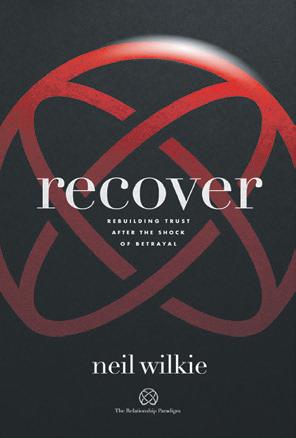
The Relationship Paradigm, The Academy for Relationships (UK), Softback, 333 pages, 140 x 230, January 2020, 9781913483005
Him: John
At 39, and sixteen stone with a bit of a beer gut, I know I ought to spend a bit more time on myself, getting fitter. I play rugby at the weekends; but I guess the beers with the guys afterwards don’t help too much with that. Sundays I sometimes do a bit of gardening, if the weather’s OK, but then fall asleep after lunch, which doesn’t go down too well with Rachel, my wife. (Ditto the beers and sometimes coming home a bit pissed on Saturday.)
I commute into central London every day, leaving early and getting home late. I’m a partner in a law firm and specialise in corporate finance. I admit I’m a bit of a snob. I like bespoke suits, and my 5-series BMW, and opera—loud. Rachel loves rock music, which I hate. And sailing, which I also hate.
We have three children, James, Jennifer and Rowena, who I don’t see that much, which I feel sad about if I’m honest. We also have a dog—well, Rachel’s dog—who I don’t like and didn’t want because he covers the house and my suits in his bloody fur.
I don’t expect perfection, but the state of the house sometimes … What does Rachel do all day? I know she has the kids to take care of, and dinner to cook, but honestly … And as for our sex life, seems I’m just here to fill our bank account and the house with nice stuff. I get little in return.
Recently, I’ve been wondering about me and Rachel. I’m not that bad-looking, tall with (thinning, I admit) dark hair and eyes, and a broken nose (from playing rugby at university) which gives my face a bit of character. I don’t expect things to be how they were when we met, but she barely even looks at me these days, let alone smiles. Think it might be time to get that Porsche.
Her: Rachel
I’m finding it hard to see any fulfilment in my life. I’m 38, feel frumpy and a bit overweight, and have no career—I had to abandon my dreams of being something great in the marketing world when the children were born—and go to the gym mainly to try and get Pierre, the hot personal trainer, to notice me, and to gossip with the women I’ve met there.
What happened to the fun-loving me, dancing and singing at rock concerts, with all her plans of sailing and travelling? Now I’m just stuck in this big house, married to John, who is rarely here, with three kids—who I love, by the way, but who make loads of mess and stay glued to their iPhones.
When I look in the mirror, I see the same curly brown hair, my really blue eyes, but where am I? Where have I gone?
Publisher’s price £12.99 Amazon price £12.99 inc. free UK delivery

To buy this book, visit www.academyforrelationships.com
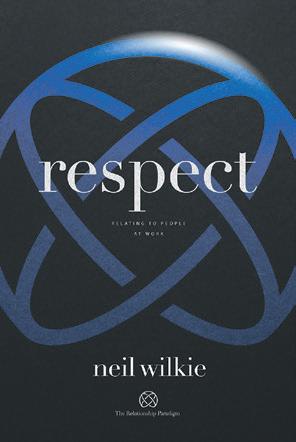
I get the feeling John wants a Stepford wife with a big, shiny white smile and a sparkling house to go with his BMW and his ladder-climbing career. But in truth I’m so tired. I don’t want to make an effort. And I don’t want to make love—if you can call John’s beery-breathed climbing on top of me on Sunday mornings that.
I don’t know what I want. I just know I don’t want this.
Eldest child: James
I guess I don’t remember much about the first few years of my life. Mum and Dad and I used to play a lot together, though, and do silly things. I remember being upset when Jenny arrived. I felt a bit out of place. She cried a lot and it wasn’t much fun having a new grumpy baby sister. The fun seemed to disappear then, and Mum and Dad had lots of arguments.
I first went to nursery school when I was four, which was great because it got me away from Jenny. When I was eight I went to the prep school, which was OK except that I had to go with Jenny, which was really embarrassing. Rowena was born when I was about four. She is really sweet, but I feel I have to protect her from her sister too much.
Four years ago, we moved here. It’s much bigger but I lost all my friends, which was not OK.
I’m supposed to be going to boarding school in September. Dad wants me to go there because he did. I’m a bit scared about it, as I don’t know what the other children will be like and I don’t want to share a room with a stranger.
Dad loves rugby and takes me to his club every Saturday afternoon. That was fun until recently, because when I turned thirteen it became contact rugby, which I find really scary. I have told him I don’t want to go any more, but he won’t listen.
I find it a bit stressy at home, and I prefer to go up to my room and play on my PlayStation. I only really see Dad at weekends as he gets back from work late. Mum seems a bit sad and grumpy most of the time, and always seems to be telling me off.
Middle child: Jennifer
I hate my life. I’m always being told off and everyone around me is so miserable. James is horrible to me, and Rowena is really irritating; she is also Mum’s big favourite. I don’t like being at home. Mum’s got no time for me and Dad is never there. I can’t wait until I’m old enough to go to boarding school and then I can escape.
Youngest child: Rowena
I love Mum; she is so kind to me. James is really good, too, because he saves me from the evil Jennifer. I wish I had a magic wand and could make Mum happy. She seems really sad most of the time and I don’t know why.
Dad is OK, but he is away at work a lot and not really interested in girly things. Our dog Woody is brilliant. I love cuddling him.
I have fun at my school and have some really nice friends.
Chapter 1: Friday—John
It was the beginning of another normal day in the lives of what, from the outside, must look like a happy and successful couple.
Radio 4’s Today programme woke me, quietly, at 6.00 am. Rachel was gently snoring with her back to me, feet away on the other side of our super-king-sized bed. I rubbed my face and wearily got up. Another day at work beckoned.
Fighting my way through the bottles of shampoo and bodywash lying on the floor, I went for a shower, and then dressed in the half-dark, because Rachel always shouted at me if I turned the light on. My wardrobe was in chaos so I grabbed the best combination of shirt and tie I could find.
I groaned in despair at the mess in the kitchen, the sink full of dirty dishes and the expensive granite worktop covered in half-read women’s magazines and chargers for electronic devices. I switched on the coffee machine and fed it with a pod. There wasn’t a clean mug anywhere to be found, so I had to fish a dirty one out of the dishwasher and rinse it out. I noticed my iPhone battery was almost flat: one of the bloody children had obviously pinched my charger. I opened the fridge to get some milk, but there was none. Shit! No coffee, and no milk to have with my cereal either. Today was a big day at work. I was due to complete on an acquisition and then have a departmental partner’s meeting.
What a great start. I gave up on coffee and breakfast and called goodbye at the foot of the stairs but there was no response from anyone so in a louder voice I said, ‘I’m going to work, for too many hours!’ and slammed the door behind me.
The drive to the station only took ten minutes, but it took another ten to find a parking space. I saw the train coming in and had to run to make it, feeling hot and sweaty and bad-tempered by the time I sat down. My mood was not improved by the fact that I was next to a very large girl, dressed as a Goth, listening to very loud and very tinny death metal music. The next 45 minutes were annoying and there wasn’t enough room to get any work done. I arrived at Waterloo Station and inserted myself into the horde heading to the Waterloo & City line.
Today was the scheduled completion meeting for a deal I had been working on for the last six months: a management buy-in of a medium-sized fashion retailer. It was valued at £100 million and was the biggest I’d been in charge of. The deal was on a contingent basis, which meant that if it wasn’t put away my firm would earn nothing. If, as scheduled, it happened today, then the firm would get fees in excess of £500k and I would get some much-needed kudos that might get me closer to the frustratingly distant target of becoming a full equity partner, which meant my earnings would more than treble.
The journey to Bank station passed in a bit of a haze, with me dreaming about the Porsche Carrera I would be able to buy and which colour to go for: metallic dark blue with a magnolia leather interior, or slate-grey with black?
In the short walk to the offices in Moorgate, the dream continued with thoughts of maybe a motorbike too; a big Harley of some sorts; a real midlife crisis bike. I had been working hard for this firm for seventeen years, and I’d had so little recognition. Similarly, from Rachel and the kids. I was the provider who kept them in the style they had become accustomed to, but got very little appreciation. Soon it would be time to treat myself; it was only what I deserved
When couples drift apart, can love be reignited? Relationship expert Neil Wilkie recommends
‘The Relationship Paradigm’
Tony left the offices of Crichton & Cranleigh in a state of baffled euphoria. All of his professional and monetary anxieties, large and small, appeared to have gone. He had only been in Crichton’s office for three-quarters of an hour and now he supposedly had £120 million. Of all the scenarios he had imagined, this was the most absurdly unlikely. He wondered whether it was possible to be in denial of good news as well as bad. Alongside disbelief, there was an unexpected feeling of fear. What was he supposed to do with so much money and what did it mean for the people around him?
What he really needed was a drink to calm him down. He started to walk back up St James’s Street towards Piccadilly and saw, down one of the side streets, the Golden Lion. Perhaps he should buy it to mark the occasion. He could leave the bank and run it, like retired footballers used to do. Better still, he could buy two footballers, one to run the pub and the other to play in central defence for Crystal Palace.
It was still fifteen minutes until opening time, so Tony walked round the block several times trying to determine a short-term plan of action. He was largely unsuccessful as he couldn’t get beyond rehearsing the ways in which he was going to tell the bank what they could do with their job.
As he passed the pub for the fifth time, he heard bolts being drawn back but decided to walk round the block one more time, so as not to appear desperate. When he finally walked in, he ordered a pint of lager, sat and briefly watched the bubbles rising in the glass, then drank a third of the pint in one long pull.
His first instinct was to try to give some meaning to the amount of money itself. He took the lawyer’s letter out of his briefcase and started to jot down some numbers. The Footsie was currently yielding 3.5 per cent. At this rate of return, his money would earn just over £4 million a year. After tax, that would be £2.5 million, which was £50,000 a week. How could you spend £50,000 a week?
The only immediate certainty was that he was going to resign from the bank. Tony had never understood the lottery winners who, while wasting a perfectly good bottle of champagne, told the press that they would carry on working. He had always felt that this was a thoughtless insult to all those who hadn’t won. No, he was off and it gave him prodigious pleasure to think he was now worth more than all those arrogant chancers on the trading floors. He probably had even more money than the chief executive. He let out an involuntary, ‘Hah!’ The barman looked up and Tony gave him a cheery wave.
It also meant that he and Amy could buy the flat, or indeed the block of flats, of their dreams. God, she would be pleased. No more grubbing around trying to scrape a deposit. They could buy their own place, fill it with beautiful things and travel the world together.

But what about her job? Tony couldn’t see her resigning immediately and setting off for an extended tour of the Caribbean. She would probably want to carry on working as a doctor, turning up to her night shift at A&E in a chauffeur-driven Bentley. How was that going to work? And was the money really a panacea for everything that was troubling their relationship at the moment? Perhaps the Amy side of things was going to need a bit more thought.
Tony’s glass was empty and he went back to the bar for another drink. His attempt at chatting to the barman was unsuccessful. Not surprising, given that talking to yourself and ordering a second pint at twenty past eleven, was always likely to trigger nervousness in bar staff. As he sat down again, he thought that perhaps he should wait before telling Amy about the money. Given his family’s luck, it was likely that something would intervene to rob him of his good fortune. What was it that Bob had said? ‘Take your time to decide what you want from life. The money can wait.’ That sounded like good advice. He should probably wait until he had at least got some of the money before telling her and certainly before he resigned from the bank.
He started to read the list of wealth advisers that Bob had given him. He wondered whether to approach it like a Google search page—take one from the top; or a wine list one from the bottom. In the end, he decided to pick one from the middle, mainly because the contact was female. He couldn’t recall a single woman in the Embezzlement Hall of Fame other than Imelda Marcos, and even then it was her husband who had stolen all the money; she just had a thing for shoes.
He started to fiddle about with the numbers again. Had he been too conservative?
Everything you read suggested the super-rich had access to ways of making money denied to normal people. If he made 5 per cent on his money, then he would have an
extra £20,000 a week. And why was he netting off tax? If what Dave said was right, no one with that sort of money paid much tax anyway. At 5 per cent a year with no tax, his income would be over £100,000 a week. While this was less than Ronaldo earned, Tony’s money would go on forever, not until his legs gave out.
Thoughts of Amy levered themselves back into his vulgar reckonings. Why wasn’t his first instinct to give her a call? What was he afraid of? He was pretty certain he loved her and this news would give them exactly what they had both been wanting. But if she did carry on being a doctor, what was he going to do all day? It was bad enough being in a full-time job that didn’t measure up to hers; what if he was doing nothing? The fact that it was his money wasn’t relevant. He hadn’t earned it, had he? And what was the point of being given this freedom, only to end up as a househusband.
Whatever the answer was to all these questions, Tony knew that the minute he told her about the money, it would crystallise the future of their relationship in the same way as a serious illness or an unexpected pregnancy. Even if he wasn’t quite ready for this, it was unconscionable to keep it a secret from her. He had to tell someone and it had to be Amy; no one else yet, just her. That was definitely the right thing to do. It was settled.
He was starting to feel hungry, so he ordered another pint and a sandwich. The pub was filling up and, two pints to the good, Tony looked around with a contented beneficence. He was trying to calculate the multiples by which he was richer than everyone else in the room put together, when he became aware of some people who had recently arrived at a table nearby. They were talking far too loudly, at a time of day when drink couldn’t possibly be an excuse. There were two women and a man, all of a similar age to him. Their clothes and accents suggested that they could have chosen somewhere better for lunch and he wished they had.
The man might have been said to be good-looking, if it weren’t for his pinched, rodent-like face and flushed, babyish complexion. Conversely, one could argue that he was only saved from being repulsively ugly by his lustrous hair and a good tailor. If he were an actor, Tony thought, he could make a good living in period dramas, playing odious sons of local landowners who deflowered girls from the village and were wantonly cruel to livestock. The two women with him were Made in Chelsea types: all pearls, cashmere and perfect teeth. They seemed to find their unattractive friend howlingly funny. Tony’s irritation with the continuing noise from their table meant he was unable to maintain his reverie, so he quickly finished his sandwich and pint. As he got up to leave, he stared at them malevolently, resolving to come back when he owned the pub and throw them out.
He wasn’t used to lunchtime drinking, so by the time he got home he felt tired and muddle-headed. He had a shower and lay down on the bed. Amy was due home at seven o’clock, so Tony set his alarm for six, to give him time to get some food. He would cook her favourite dish, chilli chicken, and get a really expensive bottle of red, the best that the local supermarket could offer. It was Alex’s gym night, so he wouldn’t be home until late, giving them plenty of time to discuss the news. As Tony lay there, he rehearsed how he would tell Amy and imagined her disbelief turning to joy.
He woke before his alarm went off. He was still lying on top of the bed, wrapped in a damp towel. He shivered and sat up. His head throbbed. Then the memory of his good fortune rushed to greet him. Instantly invigorated, he jumped up to get dressed. Amy would be home soon. It was time to go shopping.
At the local supermarket, he selected a large tub of stuffed olives from the deli-counter and free range, organic chicken breasts. Unshackled from his usual neuroses about the cost of things, when he got to the wine section, Tony reversed his normal practice of starting at the cheapest red wine and then working up until he found something that didn’t look as though it would remove his stomach lining. This time he started at the most expensive wine and, well, bought that. In fact, he bought two bottles. They were celebrating, after all. He gave a reflexive wince when the cashier rang up the total but he was sure he would soon get used to it.
He got home, opened a beer and started to prepare the chicken. It was in the oven and his beer was finished, when he remembered you were
We all judge a book by its cover; so make sure it’s a good cover
Here at Booklaunch, we have authors coming to us all the time with self-published books that they hope to showcase in our pages. Often we’re impressed by the quality of their writing; equally often we’re disappointed by their book’s appearance. Amateur typography and layout are an immediate give-away that you’ve done the job yourself; badly designed covers are another. Both can let a book down and put readers off who might otherwise have liked your work.

We hate it when writers do themselves a disservice, and we always raise the question of getting badly designed books redesigned (and properly copy-edited and proof-read, where necessary); invariably, though, authors have already spent hundreds of pounds getting their work into print and now have stacks of books that they couldn’t afford to throw away.
We all judge a book by its cover, so it makes sense to get it right the first time. Picture 1, above, shows a cover littered with the kind of mistakes we see too often: ill-chosen image, clumsy lettering and a storm of fonts and colours. That’s typical of what writers tend to do when left to themselves. We also get covers based more on what commercial publishers do: massively over-dramatic covers for action stories and tepid decorative covers for more domestic books and memoirs.
If it’s any consolation, even commercial book design in the UK is currently at an all-time low. Go into a bookshop in Europe—if only we could at the moment—and you’ll see covers that are altogether calmer and less shrill.
For a good simple cover, you don’t need any more than one font, in no more than two sizes. You shouldn’t need to use bold or italic fonts either: use the font that the designer originally designed, not a variation of it. Don’t overuse capitals and don’t try to make your lettering shout or stand out. It’s just a book.
Covers that are only typographic can be very successful: think of the early days of Penguin, before the company lost its nerve and joined the mob. Specially illustrated covers can also be superb: some of the best, again by Penguin, were those commissioned by Germano Facetti whom Allen Lane made art director of Penguin in 1960.
The internet gives you access to millions of ready-made graphic elements but bear one thing in mind: your cover
will necessarily say something about your book; your job is to make sure it says the right thing.
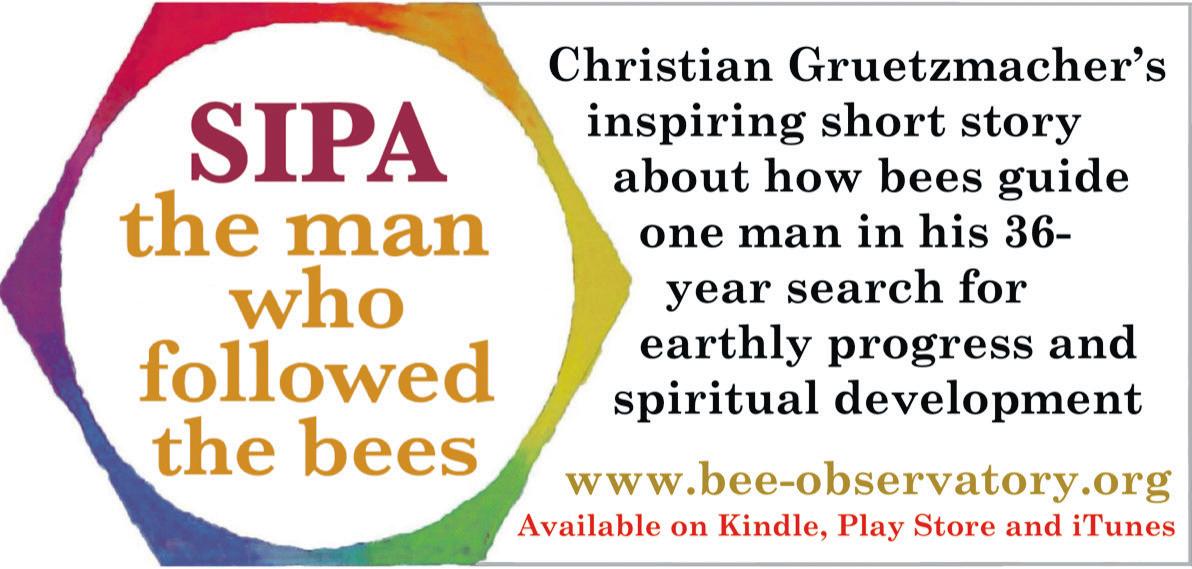
The first example, above, is nothing more than a literal depiction of the words in the title: ‘My life in the driver’s seat’. You need to say more than that. ‘My life in the driver’s seat’ sounds like a boast. To be in the driver’s seat is to be in charge. Is that borne out by the story? What is the book about? What’s its mood?


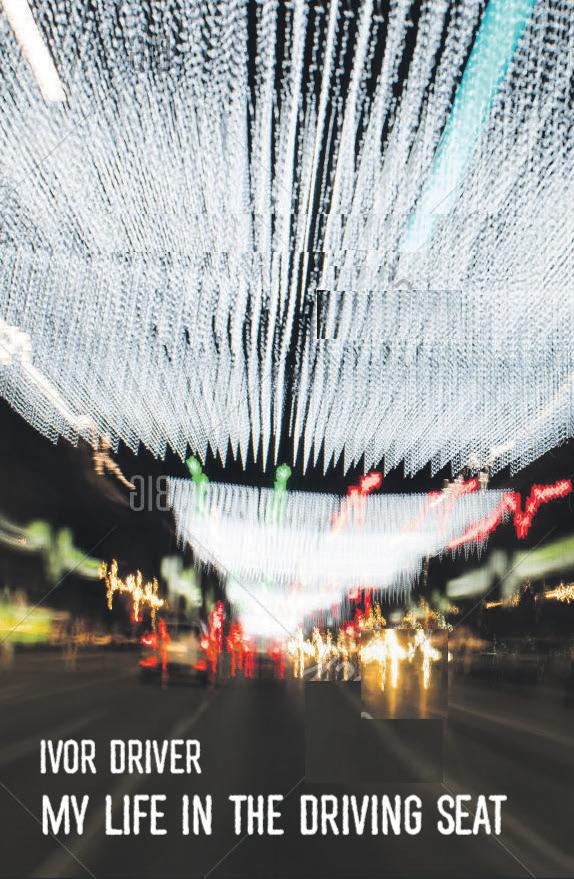

Our second example has a different tone. Here, the image focuses not on the driver but on the driver’s point of view—the life referred to in the title. The message, here, is about the driver’s lifestyle. Here, he’s not in control: he’s just another urban commuter but there’s drama. This starts to be more interesting. And unlike the first picture, the image is flat and abstract. It’s suggestive, not detailed: that means it doesn’t fight the lettering.
The third example takes a staged photo. That means it’s very specific about the type of car and driver. If you can find an image that’s relevant to your story, let it work for you—but note what leeway you have. The choice of font here is delicate and sophisticated, like the masthead of Vogue. The world we’re entering is that of the fashion magazine, and there’s a tension between that and the louche character of the car.
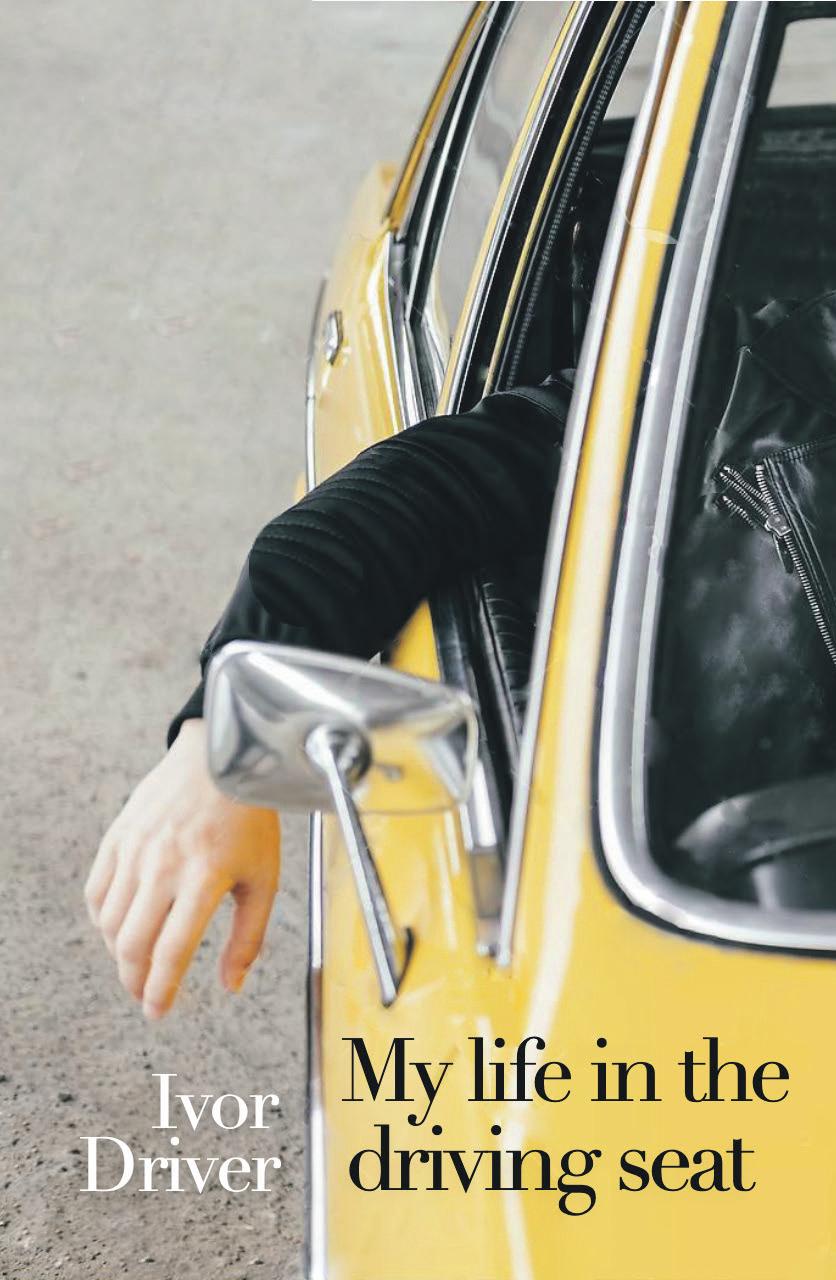
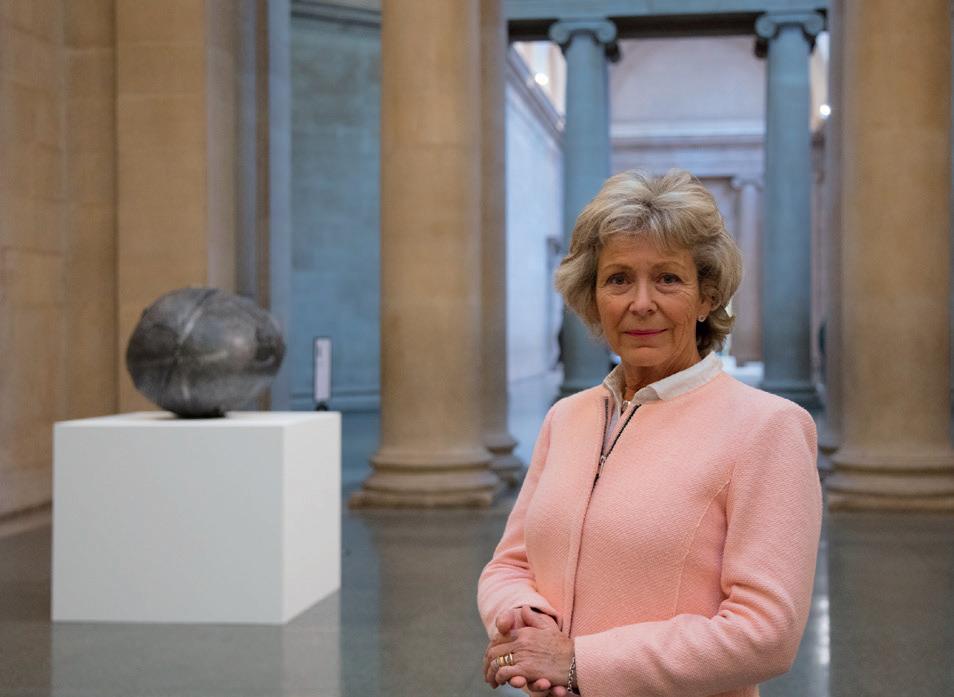
Example 4 is illustrative of the understated covers they prefer in Europe. We don’t know what’s on the other side of windscreen, but it’s cold and snowy. This could be Scandi-noir.
Example five is daring but cool. The visual language is that of a car maintenance manual but the subject is a crash dummy. To be a driver here doesn’t mean you’re more in control; you’re more at risk. The driver in this story suffers repeated knock-backs. That’s the story.
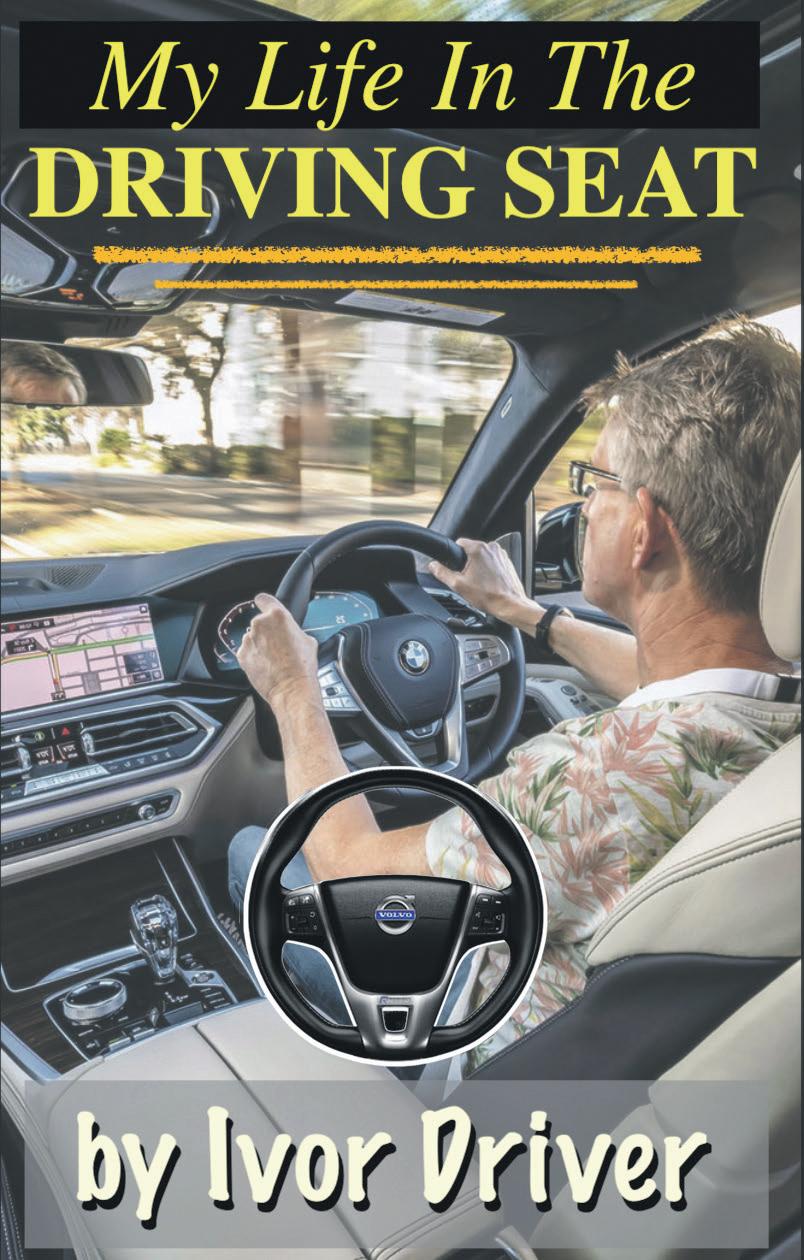
Finally, don’t forget that you don’t have to oversell. The last cover is mostly typographic, with a small visual gimmick. It’s not dynamic, but it doesn’t need to be. It gives you two pieces of information: title and author. That’s all you may need.
Before you commit yourself and spend money, try lots of ideas and get feedback. If you’re still not certain, come to Booklaunch for advice. Just don’t go to press til you’ve got it right.














A favourite game in our family involves making up name chains where the last surname becomes the next first name, thus Upton Sinclair Lewis Carroll Nye Bevan … or Leslie Stephen King Charles Kingsley Amis. I challenge you to produce the longest string, using famous names— or, if you prefer, literary works (This Side of Paradise Lost Horizon …). Want a harder challenge? Why not limit yourself to only male or only female writers, or see if your chain can lead back to where you started. Email your entry to comp@booklaunch.london putting “Comp4” in the subject line and supplying your postal address, so we can send you a prize. Winning entries will be published.
Well, this was fun. I asked you to choose two literary characters to debate the benefits of Brexit. First out of the slips was Catherine Miller from Wantage who opened Nonsense and Insensibility and found the prescient line, “Colonel Tusk continued as grave as ever, and Mrs May, unable to prevail on him to make any offer himself, nor commission her to make one for him, began to think that, instead of Midsummer, they would not be divorced till Michaelmas.” Angela Broughton in Ipswich offered a song rather than a conversation:
WANT TO BE A PUBLISHED AUTHOR? TRUST BOOKLAUNCH
We’ll work with you to improve your manuscript
We’ll help you choose a great book title
We’ll design you a powerful book cover
Mad dogs and Englishmen say No to the Frog and Hun. The Portugese don’t care to, the Slovenes wouldn’t dare to, Irish and Austrians just argue from twelve to one, When Englishmen request a siesta. In the Netherlands and all other lands, there are laws that are quite unfair, In each Baltic state there are rules they hate, which the Britishers won’t wear, Directives that Spaniards swear at, nobody else would shun But Mad Dogs and Englishmen say No to the Frog and Hun.
I’d like to have included all of Simon Fifield’s rewriting of Sheridan’s The School for Scandal (Lord Britain: When an old country marries lots of young ones, what is he to expect? ’Tis now 40 years since Lady Union made me the happiest of nations—and I have been the most miserable dog ever since! …) but length prevents. I liked Jancis Tye’s exchange between David Davis and Nigel Farrage in Harold Pinter’s The Caretaker.
We’ll help you choose the best publishing platform
We’ll format and upload your book
We’ll help you price your book

We’ll set up a print-on-demand service for readers
Davis (Looks around Europe for a parliamentary constituency, but can’t find one.)
Are you a publisher? A writer? Both?
Farrage: Looking for a seat? Here, have one of mine.
We’ll help you design a publicity campaign and we’ll reserve you a page in Booklaunch
Davis: Forty years in that place and I couldn’t find a seat, not one. All them Greeks had it, Poles, Latvians, the lot of them, all them aliens had it. They had my share of adjusted VAT receipts and customs tariffs but I couldn’t find a seat.
Farrage: You’ve spent too long there. (Sits on the bed, takes out a Class II banana with non-regulation curvature, and starts eating it.)
Congratulations to all. But my prize goes to Geoffrey Locke in Stoke-on-Trent who got it bang on—and brief, too: “Brexit?” asked Christian. “Why, from the delectable mountains I saw the gates of the Celestial City.” “But before us lies the Valley of Humiliation!’ cried Faintheart”—and he got out of the mire on that side of the swamp which was next to his own house.
Important note: We’re very selective. We won’t take on your project unless we’re really impressed by what you’ve written and think it has potential.
Contact us in confidence: book@booklaunch.london
Introducing
Showcase your books and finished manuscripts in the print edition of Booklaunch and reach 50,000 homes̶more than any other books magazine in the UK. See your work featured on our website and via Facebook, YouTube and email promotions. Grab the attention of the media, other publishers, agents, book clubs, literary festivals and libraries. Email us at: rights@booklaunch.london
Booklaunch
is a
POSTMARK AFRICA
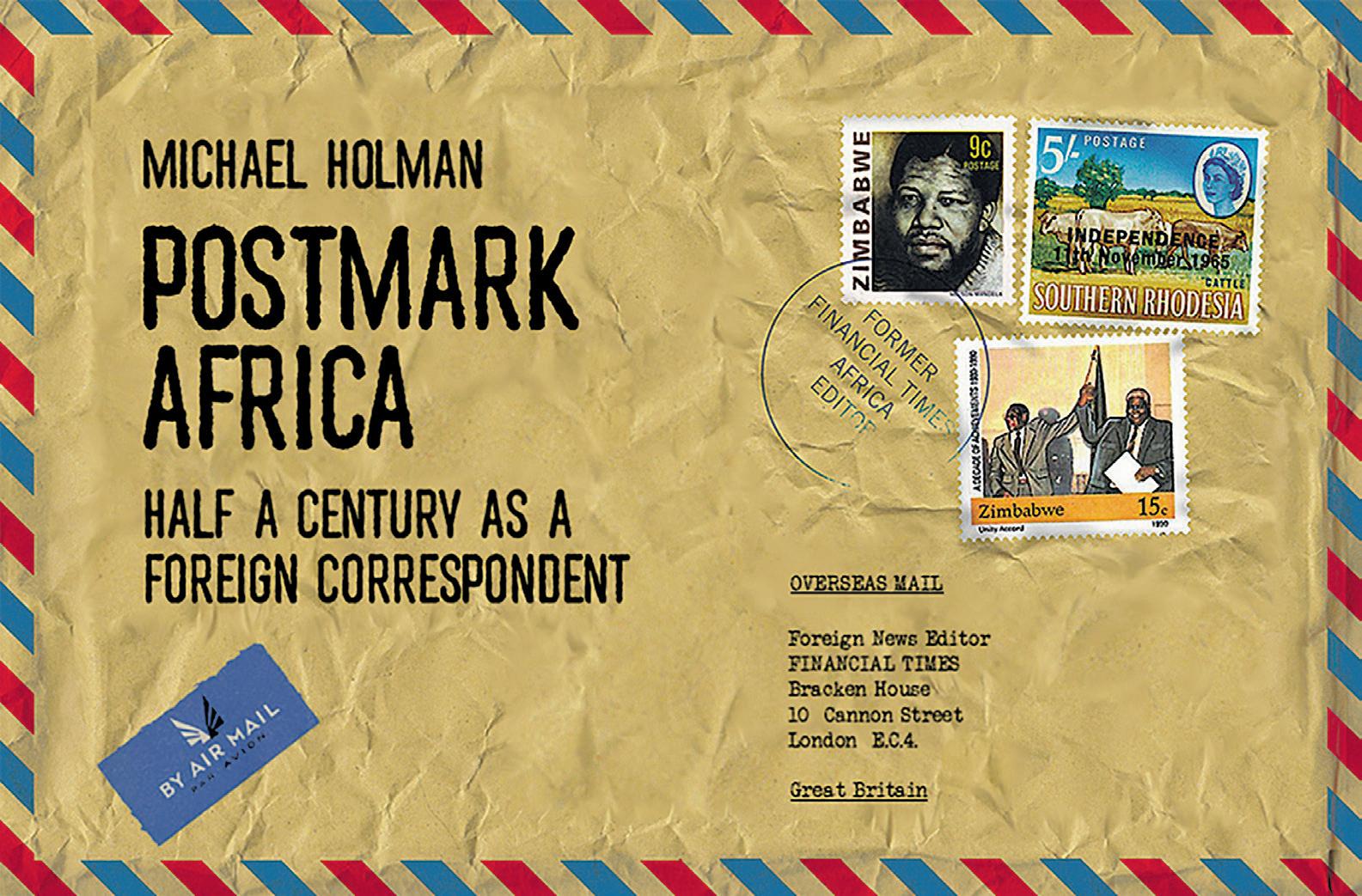
Publisher/editor Dr Stephen Games editor@booklaunch.london
Design director Jamie Trounce jamie@jamietrounce.co.uk
Advertising Nick Page page@pagemedia.co.uk
Michael Holman's brilliant collection of uplifting and incisive reports from postcolonial Africa over more than 50 years.
Alexander McCall Smith: “Read this book It contains profound observations of real and lasting significance”
Ed Balls: “Africa has no fiercer critic and no greater advocate than Michael Holman”
The Big Hippo Guide to Democracy, Referendums, Elections (and all that)
Tel: 01428 685319
Martin Rowson and Bob Marshall Andrews
Mobile: 07789 178802
Everything with Words
Publication July 25, 2019
Paperback, ISBN 9781911427124, RRP £8.99
Assistant editor Maggie Bawden book@booklaunch.london
John Githongo: “A rebel with a clear cause, Holman has a seamless capacity to get under the African skin”
Size Really Does Matter: The Nanotechnology Revolution

Colm Durkan
World Scientific Publishing
ISBN: 9781786346612
Printer Mortons Media Group Ltd, Horncastle, Lincolnshire LN9 6JR
Malcolm Rifkind: “Should be read by anyone who wants to know the history of Central and Southern Africa and understand its people”
The hilarious joint creation of Bob Marshall Andrews, author, barrister, former Labour MP for Medway, thorn in Tony Blair’s side and guest on Have I Got News for You, and multi-award-winning cartoonist, author, illustrator, writer and poet Martin Rowson. Just what you need in Brexit Britain to keep your flag flying and madness at bay
RRP: £38.00
Available from Amazon Distributed by Booklaunch / EnvelopeBooks
UK £15.95/Overseas £22.95 Email: comp@booklaunch.london There’s an art to producing magazines that touch the soul. We have the editorial and graphic skills to take your publication to the next level. NEED HELP PUBLISHING A SMALL MAGAZINE? Booklaunch Booklaunch Literary Challenge No.4 “Relay Race” Set by Maggie Bawden favourite game in our family involves making up name chains where the last surname becomes the next first name, thus Upton Sinclair Lewis Carroll Nye Bevan … or Leslie Stephen King Charles Kingsley Amis. challenge to produce the longest string, using famous names— if you prefer, literary works (This Side of Paradise Horizon …). Want a harder challenge? Why not limit yourself to only male or only female writers, or see if your chain can lead back to where you started. Email your entry comp@booklaunch.london putting “Comp4” in the subject and supplying your postal address, so we can send you a prize. Winning entries will be published. Last issue’s winners: No.3 “Last Brexit to Ooklyn” Well, this was fun. asked you to choose two literary characters to debate the benefits of Brexit. First out the slips was Catherine Miller from Wantage who opened Nonsense and Insensibility and found the presciline, “Colonel Tusk continued as grave as ever, and May, unable to prevail on him to make any offer himself, nor commission her to make one for him, began think that, instead of Midsummer, they would not be divorced till Michaelmas.” Angela Broughton in Ipswich offered song rather than conversation: Mad dogs and Englishmen say No to the Frog and Hun. The Portugese don’t care to, the Slovenes wouldn’t dare to, Irish and Austrians just argue from twelve to one, When Englishmen request a siesta. In the Netherlands and all other lands, there are laws that are quite unfair, In each Baltic state there are rules they hate, which the Britishers won’t wear, Directives that Spaniards swear at, nobody else would shun But Mad Dogs and Englishmen say No to the Frog and Hun. like to have included all of Simon Fifield’s rewriting of Sheridan’s The School for Scandal Lord Britain: When old country marries lots of young ones, what is he to expect? ’Tis now 40 years since Lady Union made me the happiest of nations—and have been the most miserable ever since! …) but length prevents. I liked Jancis Tye’s exchange between David Davis and Nigel Farrage Harold Pinter’s The Caretaker. (Looks around Europe for parliamentary constituency, but can’t find one.) Farrage: Looking for seat? Here, have one of mine. Davis: Forty years in that place and couldn’t find a seat, not one. All them Greeks had it, Poles, Latvians, the lot them, all them aliens had it. They had my share of adjusted VAT receipts and customs tariffs but couldn’t find seat. Farrage: You’ve spent too long there. (Sits on the bed, takes out a Class II banana with non-regulation curvature, and starts eating it.) Congratulations to all. But my prize goes to Geoffrey Locke in Stoke-on-Trent who got it bang on—and brief, “Brexit?” asked Christian. “Why, from the delectable mountains saw the gates of the Celestial City.” before us lies the Valley of Humiliation!’ cried Faintheart”—and he got out of the mire on that side of the swamp which was next to his own house. They Called Us Enemy George Takei A stunning graphic memoir recounting the childhood and activist George Takei within American concentration camps during World War II advertisted on this page, go to www.booklaunch.london and click on BOOKSHOP or point your Circulation 50,000+ This issue only: free to UK subscribers of selected magazines, to the book trade, to libraries and book clubs, to publishers and agents, to the media and to UK literary festivals For multiple copies for your books event, please email Social media and distribution volunteers, please email We are not available in bookshops or newsagents. To be sure of getting Booklaunch by post go to our website www.booklaunch.london and click on SUBSCRIBE Big Hippo Guide to Democracy, Referendums, Elections (and all that) Everything with Words Publication July 25, 2019 Paperback, ISBN 9781911427124, RRP £8.99 former Labour MP for Medway, thorn in Tony Blair’s side and guest on Have Got News for You and multi-award-winning cartoonist, author, illustrator, writer and poet Martin Rowson. Just what you need in booklaunch.london @booklaunch_ldn The End of Online Shopping Wijnand Jongen World Scientific Publishing How the smart, sharing, circular, and platform economies are shaping a new era of alwaysThe Nanotechnology Revolution Colm Durkan World Scientific Publishing The science and history of nanotechnology, followed by real-